There have been a few corrections in the text. This is the 2016 draft as it were. RS/
Basic Introduction to Multi-Dimensional ScienceProject by Robert SearleMulti-Dimensional Science, or MDS represents a new revolutionary approach towards a more objective understanding of claimed psychic, and spiritual phenomena. If possible, and if ultimately correct it could in the future have extraordinary benefits for the advancement of the human race.
It should be noted that the "Science" word in MDS is ofcourse used in an entirely provisional sense.The subject can thus be known as the Multi-Dimensional Hypothesis,or MDH. This is arguably a more accurate term. At present, it is purely at the "pseudo-scientific" stage of evolution, and there is a long way to go.
The words "Multi-Dimensional" have been criticized, but in this context it clearly implies claimed "psychic", and "spiritual dimensions", or "worlds" variously called spheres, planes of existence, higher realms, et al. They could be seen as being akin to a certain extent with "scientific" concepts of Parallel Universes, the Multiverse, and ofcourse the Fourth (or the Fifth, Sixth, or more) Dimension(s).
A number of people have expressed some interest in MDS. They include Jean Houston, Stanley Krippner, Elisabet Sahtouris, Ronald Pearson (originator of Survival Physics), Bruce Lipton, Brian Clegg, David Peat, Jurgen Ziewe, and the noted author, Anthony Peake who called it "..a new paradigm for borderland science."
It should be added that like a "science" MDS may also be falsifiable to some extent. Also, any relevant mathematical models (where possible) have yet to be developed. What is discussed here is purely a verbal presentation.
PS. Please note that the material here may be subject to corrections of one kind, or another (eg.text editing). It is a "work in progress" project. and must be seen as such. However, the basic concepts of MDS will probably remain unaltered.Important to Understand, and Appreciate. Most of all what follows is highly speculative, and theoretical. Unfortunately, this is unavoidable due the nature of the subject in hand. Understandably, many mainstream scientists would regard MDS as nonsense, and too New Agey to have any credence.
Some people have claimed that it is "insane,""impossible", "a mad goose chase," and "..turns the esoteric inside-out". Yet, there are many others who are able to take it more seriously.
It should be stated here that some of the things said here may come across a little dogmatic but this is not intentional. But, it is not always easy to describe "concepts" such as these in neutral terms.
Anyhow, let us try if possible to proceed with an open-mind.
The Aim of the Multi-Dimensional Paradigm. The basic aim of Multi-Dimensional Science, or MDS is to prove albeit indirectly the existence of so-called non-physical psychic/spiritual energies, and the claimed realities in which they are said to exist. If possible, and if it can be done within the context of a new version of the scientific method it could have untold benefits for physics, biology, psychology, psychiatry, parapsychology, et al. This is a huge all-encompassing subject.
Anyway, most of what follows is essentially theoretical as already indicated, and would require in the goodness of time to be "proved" indirectly as far as possible via serious research studies, and later if possible via experimentation.
The Basic Methodology, and Keystone of MDS. There are five methodological steps in the process of "objectifying" the claimed "subjective" encounters of the unseen psycho-spiritual universe. Since what we are discussing are said to be non-physical energies it should be obvious that we cannot use normal "scientific" protocol as they are physically undetectable in the main.
Anyway, the methods of research, and ultimately experimentation, are as follows.
STEP I. Finding MDOs, or Multi-Dimensional Observers would be necessary, and a special directory could be created. These are specific psychics (concerned mainly with psychic development), and mystics (concerned mainly with self-development, and "God-Realization")who claim to have inner experiences of a range of non-physical phenomena. They would notably include the manifestations of claimed ethereal inner sounds,and lights. They may among other things notably be able to view the so-called "subtle body", "auras", "the chakras","discarnate entities," or perhaps translate some of their more advanced experiences into "symbolic imagery" where necessary, et cetera.
Such data would in Western Philosophy be regarded as a form of phenomenology, a notable advocate of which was Edmund Husserl(1859-1938). Ofcourse,it should be added that people could be trained to become "reliable" MDOs via some form of meditation, or out-of-the body "technology".
STEP II. A simple questionaire would probably be used first to ask MDOs what they experience. A detailed one(s) could follow, and some ad hoc(unplanned)questioning could also occur. The aim of this is to see how many major "obscure" pieces of data are independently corroborated beyond the laws of mathematical chance. In other words, we have as it were "objective" non-physical phenomena which may not be purely the product of subjective imagination of the MDO.
It may well be discovered that there are sets of detailed supersensory data which vary. In MDS this would be indicative that "phenomena" such as the subtle body, auras, psychic rays, non-physical structures, et al exist differently (to varying extents) on differenet sub-planes, or planes of existence. Another factor in variation may be due to mental projections from the MDOs themselves. All this is further "enlarged" later on in the text.
STEP III. Such attempted descriptions of "other worlds", and their "subtle energies" are translated from words into images. This would notably be true again in connection with the subtle body, auras, psychic rays, et al. Such data could ofcourse appear on a computer with the right programming (aided probably with "instant" Computer Generated Imagery, and Virtual Reality) when attempted descriptions are reported by memory, or ideally, in Real-Time. Such "descriptions" could also where necessary be converted into "scientific" diagrams.
STEP IV. If possible in full, or in part, (or indeed, if at all in certain cases) mathematical models, and theories could then be created using reported material from MDOs.
STEP V. On the basis of step iii, and iv tests, or bona fide experiments could be undertaken to see how reliable, and objective the initial data really is. If all things go to plan we would have an approach in which we could understand on a more scientific basis the actual workings of claimed psycho-spiritual energies in both man, and the universe. All this could be a huge step forward, and may have profound implications.
The Unique MDS MethodologyThe idea of trying to marry science with psychical research, esotericism, mysticism, and religion is in itself nothing new.But what is unique with MDS is that we have for the first time probably the complete Methodology to do just that. This could have revolutionary implications, and also open up utterly vast, and infinite sources of information, and understanding never seen before in our physical world.
Anyway, as indicated in the previous section of this presentation, there are infact four basic "components" of the Methodology. They are highlighted in the following listing:-
i. Using mathematics (and modelling) to try, and understand "other worlds" is nothing new. This may be possible to some extent.
ii. Trying to "depict" unseen realities, and energies into pictures, and indeed, diagrams has been done before. This has been proferred by the likes of Barbara Brennan, and notably Charles Leadbeater, and his famous images of the subtle bodies, and their auras created on the basis of his inner experiences.
iii. Utilising Questionaires, and indeed, ad hoc questioning are essential in the Methodology of MDS. Ofcourse, they have also been used to find out what people encounter during Near-Death Experiences, and Out-of-Body Experiences. Mystical Experiences have been subjected to "simplistic" analysis in a similiar manner. For example,the Sir Alistair Hardy Society for the Study of Spiritual Experience has on occasion used a similar approach as evidence based "science". However, those used in MDS would be much more detailed, and far more advanced as they would in certain cases be probably dealing with "higher""mystical/psychic""realities".
iv. Using psychics to try, and discover "physical" knowledge is nothing new. Besant, and Leadbeater in their clairvoyant researches into "occult" chemistry are a classic example. Ofcourse, psychics have also been used to contact "non-physical paranormal energies." Examples of this include Remote Viewing, Reichenbach, and the "Odic Force," and the controversial "aura" studies of Dr Kilner using special screens. Another good example of all this, was discussed by Mark Smith who gave workshops on seeing "auras" in which many participants gave largely accurate reports of specific psychic imagery in connection with a particular person. In other words, "objective" phenomena of sorts (ref
Auras; See them in only 60 seconds, by Mark Smith, llewelyn Publications, 2002 edition, p50-52 notably).
It should be stressed again that the Methodology of MDS for using the four above "components" appears to be unique. But as indicated ofcourse these "components" are nothing new in themselves. Professor Tart, and his State-Specific Science,or S-SS comes close to it, but does not go far enough. Some people would argue that Quantum Mechanics is enough to explain claimed psychic, and mystical/spiritual phenomena. This is probably incorrect because "mainstream" parapsychology is incomplete without detailed knowledge of the "inner" phenomenology involved.The latter is the "missing link" in the theoretical side of psi research..and may someday be taken more seriously if credible corroborative data emerges. However, "relevant" mathematical interpretations of Quantum Mechanics could arguably be adapted to MDS.
Describing the "Indescribable"?Many psychics, and especially mystics have at times found it difficult to put into words their inner experiences of "higher worlds". This is especially true of the latter. They may resort at times to using symbolism of one form, or another. It would appear that those following a bona fide mystical path involving entrance into higher planes of conciousness, or Altered States of Conciousness (or ASCs) claim that the power to describe things accurately, and clearly, "progressively" diminishes. However, whatever can be recorded could still have scientific validity.
Much relies on the literal, and/or symbolic descriptive powers of the MDOs (irrespective of whether they are psychics, or notably mystic meditators) concerned. Yet,inevitably there will be "things" which can never be described at all. These would be indicated via the questionaires, and ad hoc questioning(which can ofcourse become more elaborate after the initial questions) and ultimately via the mathematical models if possible.
Ofcourse, it is well-known that ASCs can be created artifically by certain electronic stimulations of the brain, and by specific drugs. Arguably, none of this though can fully explain away in purely materialistic, and scientific terms the "simple", or usually "complex" mental imagery (ie "hallucinations" of the sane) involved by the experiencers. They are clearly not identical to the neuron* nets, and neuron nerves firing electronic impulses in the brain. However, some recent research into neuroscience suggests that it is possible to some extent to recreate "mental imagery" via computers from the brain itself as indicated by the work of James Gallant et al. But the phenomenon of self-awareness, or consciousness itself remains essentially a "mystery," and is arguably outside the confines of present day neuroscience altogether.
- neuron, or neuron nerves are micro tiny transmitters of electricity, or "thoughts" in the brain.
PS. Please note that at present, there are no basic reviews on present day psychiatry, neuroscience, western philosopy, physics, and other related subjects in connection with the development of Multi-Dimensional Science. What is presented here is "largely" focused on the esoteric, or theoretical nature of MDS. Serious credible research, and experimentation has yet to be undertaken on it.
Interfacing with the Physical,and Non-Physical. If MDOs can collectively produce reasonably reliable data about the energies in, or around physical objects, and people it would be possible to measure them scientifically using physical instruments. For example, a microscope could be used to examine in detail certain materials.Reliable MDOs should in theory be able to largely come up with the same data concerning their non-physical psychic structure, and energies not seen by the "normal" naked eye.
In another example, a person may be able to produce claimed psychic rays from his, or her body. This could be accurately measured using some kind of physical object(s) with the help of what MDOs see, and may hear psychically in non-physical dimensions (ie.clairaudience).
A similiar process to the above could be had in which physical objects do not exist. In other words, research, and experimentation in the "other world".Thus, wholly non-physical "measurements" and other "quantifiable" findings could be recorded to a limited extent.
Different Distinguishing Sights, Lights, and Sounds in Different Planes, and Different Sub-Planes. MDOs may be able to describe energies differently irrespective of whether they are focussed on something physical, or not. This suggests that they may see the supersensory "energies" of a physical, or non-physical object(s), or person(s) at different levels of conciousness in different planes, or sub-planes. Hence, the variations in the appearances of such "energies". In other words, they exist as different psi "frequencies" which produce their varying qualities in different "worlds", or states of consciousness. Ofcourse, certain key sights (eg."cities", "mountains,"unusual symbolic/psychic geometrical phenomena") in general may distinguish one sub-plane from another.
To help clarify the above, it may be best to take a simple example. Certain MDOs may describe the aura radiating around the subtle body as monochromatic, or one coloured. Others may describe it as polychromatic, or many coloured. Such colours may manifests themselves notably as rays, or concentric "circles" around the subtle body. This could again suggest that the "energies" seen are at a "higher", or "lower" world, or plane, or sub-plane of conciousness. In another instance, the aura may not appear ovoid, but have a different shape altogether around the individual, such as a pyrammidial triangle.
Some MDOs may be able in Real-Time be able to "go through" intermediate stages, or planes of being in which the aura, and subtle sub-planes (plus any other surrounding supersensory phenomena) may change in an orderly, or "disorderly" sequence via a light, or deep waking "trance"(involving a degree of withdrawal of consciousness to the "Third Eye"). In effect, they would see the inner sights, and energies change from one plane to another until the "final" one is reached (ie. the level of self-attainment of a MDO).
In certain cases, certain "energies" may be purely, or partly illusionary self-projections.
In theory, or indeed,in "reality" we would be dealing ofcourse with mental "matter" which could be affected conciously, and unconciously by ones own mind to varying degrees. In other words, psycho-interactivity. In MDS we are indicating here is that the science of the future may become increasingly more humanized, and less objective in the normal scientific sense. By "humanized" we are implying ofcourse that tested "reliable" MDOs, or "special" people would become more, and more a part of the experimental process gradually unlocking something of the secrets of the non-physical universe. To what extent, such experiments are repeatable, and indeed, reliable is presently unknown.
Materialising, and Dematerialising "Non-Physical" Energies, and Possible Subtle "Psychic" Energies in the Physical World.It should perhaps be said that there is a belief largely founded, or unfounded that these subtle psychic energies may also exist as...
a)The finest forms of subtle energy existing to a certain extent in the invisible electromagnetic spectrum of the physical universe either temporarily, or permanently.
b)On occasion, they could be detectable to some degree with certain kinds of physical instruments. This in itself is a big subject, and one is reminded here of the work of the physicist William Tiller, and the independent researcher Harry Oldfield.
However, it should be noted that MDS tends in the main to go beyond this "limited" approach because it believes that it may be dealing with higher non-physical energies (ie undetectable altogether by physical means), and hence, this knowledge would arguably have greater psychic, and spiritual benefits than dealing with low level energies that may be detectable, or become "materialized" in the material world.
Basic Theoretical Representations of Higher Worlds, and Higher Energies.Many mystical, and psychic writings claim that there are a series of higher worlds, and hence, higher energies in the non-physical Universe. Such psychic/spiritual cosmologies have often been illustrated as a set of seven or more lines either in concentric, or linear forms. They are on occasions sub-divided into smaller planes, or sub-planes. Sometimes, they are shown concentrically around our planet earth, and extending ultimately into infinity.
There are a number of Hermetic, and Alchemical texts which notably illustrate higher planes of existence as being concentric. Certain Buddhist depictions of the "after-life" realms indicate a linear, or concentric set of worlds, or planes. indeed, they can often, or not be described as colourful concentric "rainbows."
In the Alice Bailey Teachings, there is a scheme of spiritual cosmology in which there is in each plane a division of seven sub-planes.The reality of the situation is probably that there are an infinite number of planes, and sub-planes, and their number tends to vary from one esoteric, or mythological source to another.
Ofcourse, none of the above should be taken literally. They are ways of explaining something which in essence lies "largely" outside the mind to comprehend. The linear, and concentric sets of "worlds" are only representations, and simplifications for our limited intellectual understanding.
In spite of all this, some things can be explained at the level of mind. For instance, it is said that as one ascends from one higher reality to another the "skies" of each plane, or sub-planes becomes increasingly brighter, and there is growing expansion of superconciousness, or mystical experience. Simultaneously, the energies of each succeeding plane, and indeed, each sub-plane become increasingly subtle. The content of such visionary ascents can as one progresses "upwards" become more difficult, or impossible at times to describe in the limited language of this world.
In relation to our physical world of the five limited senses, such realms could arguably exist as psycho-spiritual energies having a vibratory rate faster than the speed of light. Such a theoretical notion notably appears in Quantum Physics as the Bell Theorem, and Non-Locality. The thing to grasp here is that faster-than-light energies would transcend time, and space as we would understand it. It is believed that they may exist, and interact in ways conceivable, and inconceivable in relation to our visible physical world.
Moreover, there may be at times manifestations of acausality in connection with the "mechanics" (or rather non-mechanics) of certain kinds of psychic, and spiritual phenomena. In other words, they just happen without any causal factors at all. For example, telepathy in the "other world" would not always need a transmitter wave of psi energy. What is sent is not sent but already exists at the target receiver of the telepathic message. This could also be interpreted as the realization that beyond space-time as we know it energy, and everything else in the physical universe, and "Beyond" exists in an Eternal Now...
The "Highest Truth", and "Objectivity"? One "advanced" understanding of these other planes, realms, or dimensions of Being, or Higher States of Conciousness can be found in Sant Mat as propounded by the Radhasoami Faith notably. It claims among other things that most religions, and mystical sects reach only the lower "worlds" mistaking them to be the highest where true "God-Realization" or "salvation" occurs. Through meditation known as Surat Shabd Yoga the aspirant can "die while living" and gain contact to the "higher worlds" via the "jet propulsion" power of inner Light, and inner Sound. At the same time, the Radiant Form of the living Master acts as the inner Guide.
The point of all this is that the spiritual cosmology as revealed in Sant Mat give not only the claimed five major inner Sounds, but also their inner Lights, or key "symbolic" sights of each of the higher worlds, or planes. Thus, we have in effect an actual basic "roadmap" to "salvation",or "God-Realization" which also takes one ultimately beyond the Wheel of Rebirth, or so it is claimed. In Sufism the inner "ascent" to "higher realities" is sometimes referred to as a Journey in "Symbols."
However, if a mystic practioner is willing to disclose his, or her inner experiences for comparative analysis via questionaires, and ad hoc questioning, basic supersensory experiences may emerge concerning how "real," and "objective," they are. This is a big area of research.
To complicate things, there are those mystics from both East, and West who would argue that unlike Shabd Yoga perse there is no basic set sequence of key inner Lights, and Sounds, or even key "symbolic" sights on the way "up" to the "highest" plane of superconciousness. These may even be regarded as being essentially hallucinations of the Mind. In other words, unlike Surat Shabd Yoga there may be no basic "roadmap" to "God." However, the most likely Reality is that there is a Pathway to "God", and indeed, a Pathless "Pathway" to "God," or "Ultimate Enlightenment" existing simultaneously. Remember that we are dealing probably with a super dynamic Spiritual Cosmos where anything, and everything can be "possible" in infinite "micro-seconds".
Apart from what has been said these "other worlds" appear among other things to be polymorphic to varying extent along with their content. In other words, they can instantly change form, or "shape shift" to use the New Age expression. They can also be termed multi-representational. In effect, this means that how, and "when" they are seen is dependent to some extent on a visionaries background. Hence, a "hidden" psychic connection.
Ofcourse, there could well be "static" worlds which do not "shape shift" at all.
Some have argued that the "higher inner realities" become more objective, and less subject to polymorphism, and subjective dynamics/projection. Thus, the "lower realms" are said to be very deceptive in an infinite number of ways unlike their higher "counterparts".
It is interesting to highlight the point that mystics may describe each successive "planes" as becoming less illusionary, and more real than the preceeding ones. However, if the highest "plane" is reached the lower ones could be interpreted as merely illusions, or even as total projections of the mind without any "objective" substance at all. Thus, for example, the five key "Spiritual Regions" or "planes" known in Sant Mat could be interpreted as just hallucinations, or illusions due to the changes in perception mentioned here.
Moreover, possibly depending on one's psychological make up, and other factors unknown no experience of "movement" to "higher" planes, or higher states of Being, or superconciousness may be experienced. In other words, "spatiality" as we would understand it can be transcended as "space-time" is "different" if not "non-existent" in most case scenarios.
Subtle Bodies, or Vehicles of Conciousness. A key feature in occult, or esoteric lore is the concept of subtle bodies (which also appears in the Radhasoami Faith). Here, we need to imagine the possibility of the human being consisting of a set of subtle bodies simultaneously existing in a number of planes of existence but "working" all together to a certain extent as if they were one.
It should also be said here that these "bodies" have special centres, or what in the East are referred to as chakras which can be translated as "wheels" which are to a degree replicated in the higher bodies. These involve the transmissions of psychological energies in the literal sense existing in the subconcious, and unconcious parts of the human psyche. They manifest as inner subtle lights, and sounds, and have direct connections to various planes, and sub-planes.
Anyhow, to return to the subtle bodies per se. The first of them traditionally is the etheric (or "health")body existing in the etheric world. Then there is the so-called astral, or emotional body inhabiting the plane of emotions. Next the mental body which inhabits the mental plane. Then, the the higher mental, or causal body which ofcourse exists in the higher causal, or higher mental plane. Finally, there is the Soul "Body" which is who, or what we really are but is largely controlled by the lower "bodies" corresponding to the "lower" planes.
Meditation, and the Chandian Effect. Arguably, many forms of meditation are the means by which people can gain greater mastery over the Mind, and lower subtle bodies, or "forces" of the human being. The Soul is said to be a part of God, or the Absolute Reality, and is sometimes referred to as our God-Self or Higher Self which can manifest Itself independently of the Lower Self, and can act as a Spiritual Guide, or manifest ItSelf as the Ishta Dev (or Chosen Ideal such as Buddha, Christ, or some Guru etc) in the inner journey during meditation, or after death. This is sometimes referred to as Atma-Lila, or the Play of Self.
A respected mystic of Shabd Yoga called Faqir Chand claimed that though he was meant to be the physical "omniscient" manifestation of God he was unaware of his disciples experiences concerning their contact notably of his Radiant Form during meditation, or any inner/outer miracles connected with It.In Sant Mat this would have arguably implied that he was an "imperfect" master but he found that others like himself were also seemingly unaware of their disciples inner experiences. He came to conclusion that it was the faith, and belief of the followers which enabled them to have the inner, and outer phenomena connected with him.
Infact,Chand indicated that the inner Radiant Form was actually the manifestation of the disciples Self, or rather Higher Self (ie. ones Personal God beyond the lower subtle bodies) taking on the appearance of their Master (ie. Chand as the Ishta Dev, or Chosen Ideal). The implications of this are remakable because it also implies that a "criminal" teacher, or guru could also do the same thing. Yet, the disciple would still benefit spiritually.
All this seems to indicate that powerful "subjective" dynamics are involved which are to varying degree projected (from a lower, or higher part of ones self, or selves, or indeed, ones Higher Self in the case of the so-called Chandian Effect described)into an "objective" psycho-spiritual universe. This is notably true in spiritualist literature in which the "dead" conciously, or unconciously create their surrounding world to some extent with their "thought-energy." This factor has always to be taken into account into the "objective" investigations into psychic, and spiritual phenomomena using MDOs.
It is important to say that many spiritual Teachers of various traditions, and even some New Age groups have long known about all this, and expressed the above ideas in their own ways.
A Note. The term Chandian Effect was originated by David Christopher Lane, an academic, who is well-known for his work into the history, and practice of the Radhasoami Faith
The Kundalini Dimension. An aspect of Eastern Mysticism is the Kundalini which is claimed to be a psychic energy that exists within the "subtle body". This can bring about superconcious "God-Realization." By its adherents it is said to be the most advanced form of meditation, or Yoga. However, special mental exercises involving notably chanting, and visualization can in certain cases bring about premature awakening that could lead to psychological damage...hence, the need for a genuine Adept of the Kundalini tradition.
Infact, many people may be awakened to its activity, but are unaware of its true significance. It may notably involve powerful mood swings, and other psychological phenomena. On the positive scale, it can lead to greater creativity, or even genius. As the old adage goes "genius is akin to madness" as the awakening Kundalini can lead to "strange" changes in the personality.
Essentially, the human being is at a transitional stage in his, or her life in which there is a great influx of higher "creative" energies. This can lead to a "continous" tug-of-war with an "equal" influx of lower negative energies that can dangerously "unbalance" the personality.
It should also be stated that many people who have the Kundalini "Syndrome" may claim that any negative aspects of it have been publicly overstated, and quite often, such inner experiences are positive. Usually, this is dependent on the right spiritual discipline (ie.some form of Kundalini Yoga, or some other type of meditation).It is then that Kundalini can be awakened gently, and naturally in its own time (without notably using direct visualization methods as this could lead to "premature" awakening) via love for ones Teacher irrespective of whether he, or she may be a Hindu, Sufi, Buddhist,or anything else. This should be accompanied with little, or no negative side effects.
Kundalini is a universal phenomena as evidence from various texts seem to show. The negative psychological energies of personality can be neutralized, and transmuted via meditation, and most importantly by an initial transmission of higher spiritual energy from a genuine Master. This "transmission" grows with greater love for an Adept who acts as a living channel for It.
In Surat Shabd Yoga though it is claimed there is no direct awakening of the Kundalini. Moreover, it believes that the "God-Realization" had by Kundalini Yoga (and certain other mystical traditions)only takes one to one of the lower planes of the "Great Beyond" rather than the "highest" where the Source of all is said to exist.
Esoteric Secrecy. Inner mystical experiences via meditation are strictly speaking meant to be kept private, or "secret," and the reasons for this can be various. It can happen though that the "narrow" strictures concerned about non-disclosure are not always adhered to by disciples of some inner Paths. Thus, they may write, and/or talk about their internal visionary "ascents."
What follows though is a brief presentation of key reasons for non-disclosure.
i) Inner mystical experiences are not meant for the mind but for the awakening intuition. As such there may be "much" data which cannot be described accurately by the limits of earthly language. This is the foremost reason for non-disclosure.
ii) Divulging "higher" experiences of "other worlds", or planes of conciousness along with meetings with "advanced" spiritual beings may lead to ego inflation.
iii) Revealing "secret" initiation techniques, and other practices, and ofcourse, in this case inner experiences can be seen as showing disrespect to ones Master, and the tradition he, or she may follow, and represent. Indeed, the case of inner visions could in certain instance be stopped as soon as they are disclosed to the public.
iv) Attempting to "describe" the "workings" of "Divine Energies" in the language of this world can be viewed as being a trivialization, or be-littlement. They are meant to be experienced, and not talked about as they cannot necessarily be described fully, or accurately.
v) Most mystical spiritual paths are concerned essentially with self-development as opposed to psychic development which could lead to psychic powers. Thus, using knowledge from ones inner experiences is not to be disclosed in such a way as to achieve psi phenomena. Inner mystical experience is normally meant for self-unfoldment usually culminating in "God-Realization," or "Enlightenment".
vi) Revealing inner knowledge to all, and sundry is wrong as it can be regarded as being "mad" by the uninitiated. Thus, esoteric knowledge is mainly for the few who are ready for it, and not for the masses per se.
vii) Though not directly connected with non-disclosure of inner experiences as such it is something which needs to be said. Knowing, and revealing inner meditation practices from books, or from initiation may be "useless" unless one has a genuine Teacher of high repute (ideally) as he, or she has hopefully experienced the meditative Path, and can warn the Seeker of any "dangers" on the Way.
It should be added that in MDS most attempted descriptions of "other worlds" would probably come in the main from the so-called astral world, or astral "sub-planes." This is important to understand. Attempted written records of mystical ascents to even "higher realities" will probably be very limited, and ofcourse, "descriptions" of them would be far more difficult if not nigh impossible.
Entering the "Other World" via Waking Trance in Meditation. Some hints, and clues are given in "rare" literature which can give some insight into the theory, and practice of some form of meditation. Also, on occasion references to inner experiences can also be found in a scattered, or in a more "condensed" form.
For example,
Die to Live by Charan Singh, Shabd Yoga is discussed, and there is
i)Reference to "varied" initial inner experiences (notably "mystical" Lights, and Sounds)as the conciousness is withdrawn to the "Third Eye" during meditation so that it can be temporarily released into the "astral" world in an advanced form of "Soul Travel".
ii) Something akin to "lightning flashes" (or neuron nerves firing?) may be experienced.
iii) With increasing concentration "images" of the "Beyond" become clearer, and "less shaky." This indicates that conciousness acts as a "focus field" for tuning into "energies" of the "Beyond" which can be contacted along with their Sounds,and Lights
iv) The meditator on the threshold of the "other worlds" may see in turn the "Star,""Sun", and "Moon World," but not necessarily in that sequence. These are "pierced through" via increasing concentration, so that the meditator, or "Soul Traveller" goes beyond them. The Sound of so-called Astral Bells may notably be experienced. Some critics regard this as merely tinnitus though esoteric lore indicates that this is something very different, and very "real".
To some degree, independent corroborations of this advanced form of astral projection, or meditation can be found in obscure texts. For example, Swami Sivananda in his
Spiritual Experiences gives some interesting "descriptions" even though he taught Raja Yoga, and not Surat Shabd Yoga.
Incidently, The colour blue is on occasion associated with the "astral plane". This is sometimes mentioned for example in the healing literature of Reiki, and possibly in other like traditions.
The Association for Multi-Dimensional Science.MDS is not just concerned about mysticism but also with parapsychology, or psychical research as it used to be commonly called. It may be that with the aid of MDOs we would be able possibly to understand, and even improve the potential development of a whole range of alleged psychic powers. Such "pseudo-scientific" subjects are slowly becoming to be taken more seriously through the long march of scientific, and intellectual evolution.
Yet, most forms of mysticism per se see these so-called powers, or siddhis (to use the Sanskrit term) as largely being unimportant, and possibly an obstacle from the direct path of "God-Realization", or "salvation," or "ultimate enlightenment," or "Nirvana." Thus, the onus on all this is arguably the need to focus on credible "scientific" research, and experimentation concerned with human potential technologies (ie. forms of meditation) for self-development, and "self-purification" via contact with claimed psycho-spiritual energies. This could act as the bedrock on the later "limited" use of the "psi powers" garnered via psychic development techniques.
Essentially, for such serious studies there is a need in the future for an Association for Multi-Dimensional Science, or AMS. Ideally, this would be a multi-disciplinary society hopefully in time attracting people with academic backgrounds in physics, biology, psychology, psychiatry, mathematics, and other relevant subjects.
AMS would have the following basic aims which can in time be expanded.
I. It would continue to search out willing MDOs for possible phenomenological studies, and possible experiments. Social networking on the internet for subjects could play a major role in this.
II. AMS would try to build an ever-expanding online global database directory of Buddhist, Hindu, Sikh, Shinto, Sufi, Kabbalistic, Hermetic, Gnostic, Rosicrucian, and other mystical type societies/traditions. This in itself would require detective work as most of them do not always "advertize" themselves. This would involve i) contacting scholars, and writers ii)usuage of the internet iii) contacting interfaith organisations iv) examining charity registers v)looking through esoteric magazines vi) examining existing directories....and so on. Scientific organisations could also be included in such searches.
At the sametime, an online descriptive global database of a bibliography of relevant popular books, and magazines, scholarly books, and papers, and the like could be built up. Foreign titles could also be included along with blogs that have original material.
III. Apart from the two databases above another one could deal with disclosure reporting of non-physical interactions with the "other world". This would notably include questionaires, and the records of experiences of "other worlds," and "other energies" by various people. It could also act as a support group (like certain other sites online) to help those who have had psychic, and spiritual problems of one kind or another. Essentially, though it would be a highly comprehensive ongoing research site for those interested in claimed psychic, and spiritual phenomena.
Moreover, it may be possible to get volunteers to help collect inner experience data. In other words, a P2P process possibly entitled Psi Citizens Evidenced Based "Science".
Also, those who belong to some esoteric sect could also anonymously attempt to describe their own experiences. Yet, they must be comfortable about this. The reason being is that their sect may have strict rulings concerning confidentiality about the nature of practices involved, and also, the "exact" nature of their inner experiences.
IV. The need for continuing research, and development of a general theory, or working hypothesis of the Unseen Universe would be necessary. This would involve ideas from Theosophy, the Alice Bailey Teachings, Spiritualism, Maharishis Vedic Science, and Technology, Pearsons Survival Physics, Bohms Implicate Order,and the like. Concepts from "mainstream" science could be included too such as Quantum Mechanics, the Multiverse, the Holographic Model,the Fourth Dimension, Tachyons,the Participatory Universe, et al.
Also, it must be remembered that Multi-Dimensional Science probably cannot give totally "provable" answers as to what the ultimate nature and purpose of Truth is really all about. It is quite possible that there are no absolute truths, and that everything exists as relativism in an infinite universe. Science can only go so far, and at the end of the day there will always be those who would understandbly argue that our own personal experience is the only thing that really matters.
A Public Notice.At present, the following (edited) request has been closed down for the time being due to workload. Yet, it is worth reading as it can be considered as a continuation of the above body of the text:-
"..Any reader here who has, or is able to experience (like the MDOs) a range of "energies" notably seeing auras, subtle bodies, inner mystical sounds, and lights, et cetera would be welcomed if they contact us. We are seeking attempted descriptions of such "phenomena". Much of this data will probably come from various healing "fraternities" such as Reiki, and those who meditate (eg. Kundalini Yoga). So-called Remote Viewing, or RV could have some relevance as well.
It is suspected that the best approach to the above is probably via direct phone contact rather than a simple public notice such as this.In spite of this, it is hoped that this public notice will elicit some response.
Furthermore, we are also on the lookout for anyone who may be willing to divulge contacts in connection with little known esoteric societies in Sufism, Hinduism, Judaism, Paganism, or any other tradition.."
It should be made clear that with the exception of most psychic groups, esoteric/mystical orientated ones would in the main not appreciate the kind of research indicated by MDS. Hence, the need to approach them with caution. The investigator could "pose" as a truth seeker, and should be able to find out whether disclosure of any inner experiences are forbidden, or not.
Another thing to fully understand, and appreciate is that some psychics, and some mystic disciples may suffer from a degree of "madness", or "psychosis" (eg. an obssession with certain far out conspiracy theories, or they may confuse themselves with sounds, or "people" that seem to be physical, but are not heard, or seen by "normal" individuals in their vicinity). They may have delusions about themselves, and others. This does not necessarily mean that their attempts at describing inner "energies" in the "other worlds" is invalid. Only by collecting testimonies from such people, and their "sane" counterparts can we determine whether "key" patterns emerge, and this could be suggestive of the "objective" nature of their "other-wordly" experiences. The problem of possible "psychosis" may be due to Kundalini activity as already suggested in another section of this presentation.
Basic Glossary- Multi-Dimensional Observer(MDO)= A psychic who can on regular occasions possibly "witness" psi "energies", and forms like the chakras, subtle bodies, rays, auras, out-of-body experiences, et al. They have key relevance in the potential advance of Multi-Dimensional Science.
- Polymorphism = In the context of MDS, this term implies that "higher planes", and the "beings" in them can change their structure, or form. It could also be problematic, and deceptive when attempts are made to "describe" various kinds of psi "energies," such as rotating lights, spiral forms, odd spatial geometric patterns, radiation fields, unexpected materializations, and dematerializations, et cetera.
- Psycho-Interactivity = The concept that people who are able to enter "other worlds" can to varying extents, interact, and actually change the content of their "visions" via the means of their mind power, and intentionality.
- Multi-Representation (of Planes) = In the context of MDS, this can imply that the "design" of the "same set" of "higher worlds" can manifest themselves differently in an infinite number of ways. In other words, a form of polymorphism. Ofcourse, any number of "planes", or "worlds" can represent themselves in ways largely effable, or "ineffable".
- Polychromatic (Psi) Field = Many coloured Aura, or indeed, any form of psi energy (eg a ray) which manifests itself as many coloured.
- Monochromatic (Psi) Field = One coloured Aura.
Please note an extended glossary may be included which would have terms, and defintions
not found in the main body of the text.
A. Some Key References, and Notes. 1) Bohm, David,
Wholeness, and the Implicate Order, Routledge, 2002
2) Karangulla, Shafica,
Breakthrough to Creativity-Your Higher Sense Perception.De Vorss, 1970
Among other things, interesting "evidence" is presented from certain psychics to suggest that chakras, and subtle bodies are indeed "objective" phenomena
3) Capra, Fitjof,
The Tao of Physics, Shambala 2010
The seminal text which popularised the connection of Quantum Physics with Mysticism.
4) Talbot, Michael,
The Holographic Universe,Harper Perennial Books,1992
A brilliantly readable introduction to how holography can relate to Mysticism, and Psychic Phenomena.
5) Powell, Arthur, books by him
The Etheric Body, The Astral Body, The Mental Body, and the Causal Body.A fascinating compilation of data from the literature of Theosophy notably the writings of Charles Leadbeater.
6) McTaggart, Lynne,
The Field: The Quest for the Secret Force of the Universe, HarperCollins, 2008
7) Radin, Dean,
The Concious Universe; The Scientific Truth of Psychic Phenomena, Harper Collins, 1997
8) Masters, Robert, and Houston, Jean,
The Varieties of Psychedelic Experience: The Classic Guide to the Effects of LSD on the Human Psyche,Park Street Press,2000
A very important seminal work on the phenomenology of drug induced experience.
9) Blackmore, Susan,
Beyond the Body: An Investigation into Out-of-the-Body Experiences,Academy of Chicago Publisers, 2005
An important, and reasonably comprehensive account of "astral projection" by a sceptic.
10) Leadbeater, Charles,
Man, Visible, and Invisible, Quest Books, 2000
An intriguing work with the classic coloured plates of the auras of the different subtle bodies existing simultaneously in different planes of conciousness, and making up the "whole" man, or indeed, the "whole" woman.
11) Sanella, Lee,
The Kundalini Experience: Psychosis, or Transcendence, Integral Publishing, 1987
A psychiatric study into Kundalini
12) Moen, Bruce,
Afterlife Knowledge Guidebook: A Manual for Retrieval and Afterlife Exploration, Hampton Roads Publishing, 2005
13) Krishna, Gopi,
Kundalini:The Evolutionary Energy in Man, Shambala, 1997
14) Goel, B.S.,
Third Eye, and Kundalini(An Experiential Account of the Journey from Dust to Divinity), Third Eye Publication, New Delhi, 1986
A rare, and unusual lengthy text of one mans experience of Kundalini activity. However, some of the images used are a bit crude.
15) Muktananda, Swami,
Play of Conciousness: A Spiritual Autobiography, Siddha Yoga Publication, 2000
An extraordinary "detailed" account of inner experiences...
16) Singh, Sawan,
Discourse on Sant Mat, Radha Soami Satsang Beas, 1997
This contains references from mystic poets of Sant Mat, and Surat Shabd Yoga which can be seen as being suggestive that the so-called "Spiritual Regions" may be "objective" realities to a certain extent.
17) Puri, Lekh Raj,
Mysticism: The Spiritual Path, Vol II, Radha Soami Satsang Beas, nd
Important work that gives some insight into "higher planes" of conciousness accessed by Surat Shabd Yoga. Puri also produced another book called
The Radha Swami Teachings, which also gave similiar insight.
18) James, William,
The Varieties of Religious Experience, A Study in Human Nature.Longmans, Green, and Co, 1902.
19) Peake, Anthony,
Is There Life After Death? Chartwell Book, 2006.
20) Stephens, Arran,
Moth & the Flame,Adventures with Spiritual Adepts of our Times, Here, the focus is on Sant Kirpal Singh Ji who wrote a coded diary of his inner experiences (intended for the attention of his Master,Sawan Singh Ji)about his inner ascents into "higher" worlds by means of mystical Sound, and Light. Most remarkably, he claimed that there was a "secret" set pattern of visionary phenomena of what is to be experienced before entering the "highest" Spiritual Region of "God-Realization." In other words, something akin to an "objective" reality which other initiates had to experience.
http://www.arranstephens.com/Arran/Moth_%26_the_Flame.html 21) Grof, Stanislav,
Beyond Death, The Gates of Conciousness (Art & Imagination) Thames, and Hudson, 1980.
22) Crookall, Robert,
The Supreme Adventure, Analyses of Psychic Communications, James Clark, and Co, 1975
23) Parmahansa, Yogeshwaranand,
Science of Soul : Atma-Vijnana (A Practical Exposition of ancient method of visualisation of Soul)Science of Soul : Atma-Vijnana (A Practical Exposition of ancient method of visualisation of Soul) Yoga Niketan Publication, 1997
B. A Few Examples of a Questionaire(s). In MDS the evolution of more, and more detailed questionaires could be seen as a continous process along with ad hoc questioning. To gain any idea of the kinds of questions required would ofcourse require an "initial" reporting from MDOs of their inner experiences. The following is just a brief example of examples so to speak of the kinds of questions which could be asked from memory, or better still in real-time.
i) The Chakras.Do these have specific Sounds?
Do the colours change?
Do you see thoughts travelling in, and out of them?
Do the Chakras have specific patterns, or images......................? (ie. etcetera)
ii) The Aura.Does the Aura emanate as rays from the subtle body?
If not how can they best be described?
For example, do they manifest as blobs of moving coloured lights?
Do the coloured rays, or "lights" have Sounds?
Is it possible to describe, or even transcribe these Sounds....................?
iii) Inner Sounds. Do you hear inner Sounds during concentration, and vision of inner worlds?
Do they become clearer with greater concentration?
Do these Sounds create "music" of somekind?
Can you hear them from physical, and non-physical "objects".....................
?
iv) Inner Lights.Do you sometimes see different kinds of "disembodied" lights in psychic "space?"
Do these lights communicate, or create music of some "description?"
Do they change shapes?
Do they react to thoughts coming from you? (ie. psycho-interactive)
Do the lights move rapidly, and in what ways (eg. zigzaging)....................
.?
What follows is a brief on the hoof basic questioning of the visionary, David Harrington, and his inner experiences. Ofcourse, alot more could have been garnered if a more structured, and far more comprehensive approach had been initiated...
RS.I assume you had experience with inner Sounds
DH.Oh yes Voices, Visions, etc
RS.Do you normally hear a specific Sound like Bells, or thunder or drums? Does the colour blue often feature in your experiences?
DH.Lots of thunder and voices, water
RS.Very interesting
DH.Blue? A little but not overly so.
RS.Interesting...what about the colour red?
DH.About the same....Lots of rainbows in my visions.
RS.Do you see things during normal waking conciousness rather than via trance, and astral travel Or is the former a rare phenomenon
DH.Normal waking conciousness..usually with very little warning.
RS.I see. It happens suddenly
DH.I have been transported to spiritual realms you might say.
RS.And do the phenomena suddenly go as well rather than fade away..have you come across Surat Shabd Yoga?
DH.Yes suddenly, usually my ears will plug up and I am compelled by a strong urge to seclude myself somewhere quiet where I can receive the vision(s) without interruptions.
RS.Very interesting... And Shabd Yoga...heard of it? It teaches advanced soul travel, and uses the Sound as a means of mystic transport
DH.I've heard of it but not familiar with it though. Sounds very interesting indeed.
RS.But do you use Sound to transport upwards, or do you have a whirlwind type off experience Do you merge into the Sound, and does it pull you up or not? In other words, spiritual levitation.
DH.Hmm....it has a couple of times I would say.
RS. Interesting... And you have met beings, and have had a telepathic rapport with them
DH.I have ascended to higher realms and then back down to earth again several times in my visions.
RS.Do the beings change forms at all...maybe I should read the book!!
DH.Yes you should read the book for sure. Yes there are creatures that change forms to adapt to their surroundings.
RS.Do any appear alien like as understood in UFO "mythology".
DH.No mostly animal forms or humans who take on animal forms.........................
.
C. Some Interesting Links.http://www.spr.ac.uk/main/ This Society for Psychial Research was the first "credible" organisation to seriously investigate psi phenomena in a serious scientific fashion. Founded in 1882.
http://www.spr.ac.uk/main/links This an important source of links for more scientifically orientated societies concerned with psychic phenomena (eg. The Rhine Research Center).
Please note that the following tend to be less credible, and less "scientific" However, they are still important especially in the potential development of Multi-Dimensional Science.
http://www.iacworld.org/http://www.monroeinstitute.org/ Founded by Robert Monroe, a respected populariser of out-of-body experiences.
http://www.astralinfo.org/about-the-author/http://www.journeyoftruth.co.uk/testimonials.htmlhttp://www.multidimensionalman.com/Multidimensional-Man/Astral_Travel_and_life_after_death.htmlhttp://www.astraldynamics.com/http://www.kurtleland.com/my-books/multidimensional-human/89-the-multidimensional-human-outlinehttp://www.grahamnicholls.com/out-of-body-experience-coaching/http://www.spiritualresearchfoundation.org/ This link has some interesting attempts to depict psychic interactions. However, some of its pics of "spirits" look comical, and unprofessionally drawn. Furthermore, some of its notions about the world appear at times questionable, and "unscientific".
http://www.issseem.org/index.cfmhttp://www.esotericscience.org/ This has some interesting writings, and is promoting a book.
http://www.alisterhardysociety.org/http://www.ehe.org/display/splash.htmlhttp://www.scpr.org/programs/patt-morrison/2011/09/29/20837/jackgallantucberkeleyShinjiNishimotobrainimaging/ The link presents a short intro into brain imagery research undertaken by Gallant, et al as mentioned in the main body of the text to MDS. Also, this other link may be of interest
http://gallantlab.org/brainviewer/cukuretal2013/ Two Important Blogs
http://esotericotherworlds.blogspot.co.uk/2012/12/neurocosmology_26.htmlhttp://thoughtsandvisions-searle88.blogspot.co.uk/2012/12/subtle-perceptions.htmlD. Pictures of "Psychic Energies". The following are from basic image searches on the internet
Please note also there may be a technical problem with the links. Thus, one section on Chakras may come up instead with the images of the Subtle Body, et cetera. It is hoped that his may be corrected somehow. Apologies for this if it happens.Depictions of "Auras".http://www.google.co.uk/search?hl=en&q=aura&bav=on.2,or.r_gc.r_pw.r_qf.&bpcl=35466521&biw=1280&bih=771&wrapid=tlif135150329084810&um=1&ie=UTF-8&tbm=isch&source=og&sa=N&tab=wi&ei=mk2OUOjmOYvM0AWYq4DoAQDepictions of "Subtle Body."http://www.google.co.uk/search?hl=en&cp=11&gs_id=w&xhr=t&q=subtle+body&bav=on.2,or.r_gc.r_pw.r_qf.&bpcl=35466521&biw=1280&bih=771&wrapid=tljp1351503699870020&um=1&ie=UTF-8&tbm=isch&source=og&sa=N&tab=wi&ei=NU-OUKmBC_Pa0QWQyoGQCwDepictions of "Chakras."https://www.google.co.uk/search?q=chakras&hl=en-GB&gbv=2&prmd=ivns&source=lnms&tbm=isch&sa=X&ei=MV9BU_blPMaxhAeBhoHYAg&ved=0CAUQ_AUKundalini Energyhttps://www.google.co.uk/search?q=kundalini%20energy&bav=on.2,or.&bvm=bv.53537100,d.d2k,pv.xjs.s.en_US.MLJSUkuQGS4.O&biw=1280&bih=771&dpr=1&wrapid=tlif138096534659711&um=1&ie=UTF-8&hl=en&tbm=isch&source=og&sa=N&tab=wi&ei=DtxPUrCFLJD70gXT2IHoCwDepictions of "Planes of Existence."https://www.google.co.uk/search?q=planes+of+existence+buddhism&hl=en-GB&gbv=2&prmd=ivns&source=lnms&tbm=isch&sa=X&ei=_A9EU-CdMKjG7AaD7IDgAg&ved=0CAUQ_AU"Inner Planes"https://www.google.co.uk/search?q=inner+planes&source=lnms&tbm=isch&sa=X&ei=oIhOUsi7GsmZhQejn4CYCA&sqi=2&ved=0CAcQ_AUoAQ&biw=1680&bih=910&dpr=1Depictions of Psychedelic-like "Worlds."Sometimes reports from the "other world" suggest that the colours of various beings, and objects can be more "stunning," and "more real" than anything known in the physical universe. In other words, "psychedelic-like".
https://www.google.co.uk/search?q=psychedelic+art&hl=en-GB&gbv=2&tbm=isch&oq=psychedelic+art&gs_l=img.12...0.0.0.2844.0.0.0.0.0.0.0.0..0.0....0...1ac..34.img..0.0.0.gbUOqAcVfMIBuddhist Thangka ArtSuch art is meant to represent "higher states," or "worlds" of conciousness. Ofcourse, they can possibly link with "other worlds".
https://www.google.co.uk/search?q=tangpa+buddhist+tibetan&source=lnms&tbm=isch&sa=X&ei=pxxpUqypGfGY1AWxwICwDg&ved=0CAcQ_AUoAQ&biw=1280&bih=933#q=buddhist%20thangpa%20art&tbm=ischKirlian Photography.By using electricity, and using a special Kirlian "camera" (or something similiar) it is possible to artifically create what appear to be "auras", and other kinds of colourful "psychic energies". However, these are probably not "real" energies as seen by certain types of psychics. Yet, the examples of Kirlian Photography presented here are arguably a good "representation" of what they could look like without artist representations of them seen on other links of this section on Multi-Dimensional Science
https://www.google.co.uk/search?hl=en&noj=1&biw=1280&bih=770&q=kirlian%20photography&um=1&ie=UTF-8&tbm=isch&source=og&sa=N&tab=wi&ei=iPWQUc7aGsqu0QW4u4HoAwSurrealismThe "lower" psychic "realms" are said to be similar in nature to Surrealism in art
https://www.google.co.uk/search?q=surrealism&safe=strict&biw=1600&bih=752&source=lnms&tbm=isch&sa=X&ei=Z_2cVYDYK_Hd7QbI8IK4Bw&sqi=2&ved=0CAYQ_AUoAQWhat Dreams May ComeThe images are from a film, and they often depict scenery in the "afterlife" as being "extra colourful" like psychedelic experiences.
https://www.google.co.uk/search?q=what+dreams+may+come&safe=strict&biw=1600&bih=752&source=lnms&tbm=isch&sa=X&ei=APicVYPwKYG9UvKPgbAL&ved=0CAkQ_AUoAg#imgrc=_PatternsInner experiences may involve in part seeing a variety of patterns that maybe describable, semi-describable, or indeed, indescribable "altogether".
https://www.google.co.uk/search?q=patterns&biw=1280&bih=930&tbm=isch&tbo=u&source=univ&sa=X&ei=MbefVdK6OIWjU4rcjrgL&ved=0CC0Q7AkGeometry"Other Worlds" may have a variety of geometrical shapes in "certain places". Again, they maybe describable to some extent, or indeed, "indescrible".
https://www.google.co.uk/search?q=geometry&hl=en-GB&biw=1280&bih=930&site=webhp&source=lnms&tbm=isch&sa=X&ei=zbifVff5IcvkUty1g7AL&ved=0CAYQ_AUoAQEsoteric Geometryhttps://www.google.co.uk/search?q=esoteric+geometry&safe=strict&biw=1680&bih=897&source=lnms&tbm=isch&sa=X&sqi=2&ved=0CAYQ_AUoAWoVChMIypia1OeRxwIVro_bCh2BDQe6Occult Geometryhttps://www.google.co.uk/search?q=occult+geometry&safe=strict&hl=en-GB&biw=1680&bih=897&site=webhp&source=lnms&tbm=isch&sa=X&ved=0CAYQ_AUoAWoVChMIsKast-iRxwIVxbIeCh01Ug-FSacred Geometryhttps://www.google.co.uk/search?q=sacred+geometry&safe=strict&biw=1280&bih=626&source=lnms&tbm=isch&sa=X&ved=0CAYQ_AUoAWoVChMI4eGXvf6MyAIVQTgUCh2WxgoQLeadbeater, Man Visible, and Invisiblehttps://www.google.co.uk/search?q=leadbeater+man++visible+and+invisible&biw=1280&bih=930&source=lnms&tbm=isch&sa=X&ved=0CAYQ_AUoAWoVChMIkM3et9z2xwIVyZceCh1teguwSpiritual Science Research FoundationThe following is from pinterest as opposed to google image search
https://www.pinterest.com/ssrf/Hypnagogic"Hallucinations" experienced by some people as they slowly enter the sleeping state
https://www.google.co.uk/search?q=hypnagogic+and+hypnopompic+hallucinations&safe=strict&biw=1280&bih=626&source=lnms&tbm=isch&sa=X&sqi=2&ved=0CAYQ_AUoAWoVChMIsbiu1PqMyAIVhSPbCh0JhQky#tbm=isch&tbs=rimg%3ACaDpZ50us6O1IjhxsNPP_1uc350XTKK_1wbFrJ6TbTPhb-BSjGmSXVz-V_1PSibNOTocnrTCETXrsaj4GoyYlNjFqLQDCoSCXGw08_1-5zfnEVsPZtww1vh-KhIJRdMor_1BsWskRSbPWqcHA36UqEgnpNtM-Fv4FKBH8MM9J1g2nUioSCcaZJdXP5X89EaXKhLm4CWYIKhIJKJs05OhyetMRlBEY79m3NQMqEgkIRNeuxqPgahErONzrlDfqCSoSCTJiU2MWotAMEaT4jwzCegwd&q=hypnagogic%20https://www.google.co.uk/search?q=hypnagogic&safe=strict&hl=en-GB&biw=1280&bih=626&site=webhp&source=lnms&tbm=isch&sa=X&ved=0CAYQ_AUoAWoVChMInJr3i_yMyAIVyz8UCh1SLwwPMagic Symbolshttps://www.google.co.uk/search?q=magic+symbols&safe=strict&hl=en-GB&biw=1280&bih=626&site=webhp&tbm=isch&tbo=u&source=univ&sa=X&sqi=2&ved=0CB8QsARqFQoTCNn0vc3_jMgCFaVq2wod2bUERAThought FormsThe following pics are from an important text by the title of Thoughts Forms by Annie Besant, and Charles Leadbeater
https://www.google.co.uk/search?q=thought+forms+leadbeater+besant&safe=strict&hl=en&biw=1280&bih=626&site=webhp&source=lnms&tbm=isch&sa=X&ved=0CAYQ_AUoAWoVChMIwZyW1I2cyAIVwr8UCh0pfA1TE.Some Interesting Articles The following link on so-called hyperreality may well have relevance to the above link, and to other aspects of the MDS project.
http://en.wikipedia.org/wiki/Hyperreality An interesting article on Kundalini
http://en.wikipedia.org/wiki/Kundalini_Syndrome The following link suggests that kundalini is largely safe if it is arounsed naturally. It is also a brief critique of the above kundalini link which appears to "overemphasise" the negative.
http://www.raviana.com/faq_125.html The following link has links so to speak to certain key diagrams of planes of existence in the Radhasoami/Sant Mat Tradition.
http://santmat.livingcosmos.org/The following maybe of interest, and was originally taken from the Kheper website, and put on Esoteric Other Worlds blog
http://esotericotherworlds.blogspot.co.uk/2013/07/how-real-and-objective-are-chakras.htmlThe original Kheper essay on MDS which appeared back in 2005.
http://kheper.net/essays/Multi-Dimensional_Science.htmlF."Relevant" Articles.All articles in this section are by Robert Searle.
I. The Two Inner Awakenings; A Personal Account.Meeting Dr Sharma In London 1990. Back in summer 1990, I met up with Dr Sharma also referred to as Manav Dayal a teacher of "Shabd Yoga" in the Faqir Chand tradition. I came across him via a contact, who claimed that it might be best to meet him at Heathrow Airport which was not far from where I lived at the time (ie Slough). This I did, and went to the correct arrival point for passengers. I had a sign with his name on it. The only pic I had of him was as a younger man, and it was not a particularly good reproduction. Anyway, I waited awhile as the passengers left the plane, and then I saw an Asian go towards a portly elderly man from the crowd of onlookers. He put a garland around the new arrival to Britain. This I knew to be a traditional gesture of respect to someone of importance, and I rightly guessed that it was Dr. Sharma being honoured. The Asian devotee though seemed taken aback by this as he could not understand how I could have known the identity of his guru....
Anyway, I talked briefly to Dr. Sharma, and for whatever reasons he mentioned something about psychic odours. Personally, I found this an odd subject compared with the high brow thinking of "Shabd Yoga", and Sant Mat. Indeed, I have to confess that I found Sharma to be somehow eccentric in manner.
After that, I drove down to Hammersmith, London to a certain address to meet him again for an interview I was doing for the magazine Yoga and Healing. Dr. Sharma was staying with some devotees, and I hardly got any questions out as he seemed to be intent in giving a long rambling intellectual discourse on Hindu mysticism. This was recorded ofcourse but unfortunately the tape was later lost. Anyway, he referred to Sant Mat as Sat Mat, or the Path of Truth, and regarded Beas Satsang as ".....being like an empire." He may well have got these two points from his own master Faqir Chand, and simply repeated them to me. He also gave the old traditional interpretation of the word Radha, and reversed it by repeating it as "Dhara, Dhara, Dhara,"......meaning spiritual current! At some point during the interview (or should I say discourse from Dr Sharma!) I thought I heard him say the following......"I do not know who is saying this. Some current is flowing through me.." or words to that effect. Again, I must stress the word "thought" of him saying this as I do not fully recall whether this actually appeared on the tape, or not! Maybe a trick of the mind........After all this, I had an informal chat with him. At one point, he left the room, and thereupon re-appeared, and said "I am your Satguru!" Later, we had a wonderful vegetarian lunch.
When I left to return to Slough in my car I had an extraordinary experience. I became aware of a power flowing through me. It was controlling me in the most NATURAL, and SPONTANEOUS manner. There was no fear of any sort involved. It was as if something truly wonderful had been re-discovered from ages past. This energy was incredibly subtle in a way that is difficult to describe. It was a super-tactile experience. No sounds, or lights, or anything similiar was had. It was a PROCESS of AWAKENING from the dream-like creation of the physical universe. Though I used the word "natural" just now in capitals it was somehow more than "natural". This experience went on for a long while. The following day after my encounter with Dr. Sharma I rang him about it. He commented to his surprise "......that it was happening already " (spontaneous initiation). However, I felt that this subtle energy seemed to be trying to "control" me too much, and I managed to break away from it. I would have loved the intensity of that experience to have continued but the problem was that I did not really take Dr. Sharma very seriously, and did not regard him as my real Satguru. Yet, as Jashan Vaswani once informed me that "THE REAL SATGURU IS WITHIN YOU" Oddly enough, this was what Faqir Chand claimed...that the physical master only acts as a catalyst for psycho-spiritual experiences. This was something I did not appreciate at the time.
Sadly, Dr. Sharma passed on several years ago, but the teachings continue through various lines of "masters".
Postscript. I should also said that at the interview Dr Sharma claimed that the Sound Om could be heard not just in the lower realm but also in the higher ones. A Sant Mat purist might well interpret this as indicative that his "version" of "Shabd Yoga"s did not lead beyond the planes of Kal, and Maya. Morever, it is not seen as the highest spiritual meditation, but seen as being one of many.
Meeting Sant Harjit Singh in Southall.In January 2007 I made contact with Sant Harjit Singh. He is one of the recognized successors of Faqir Chand. Before actually visiting him in Southall I viewed his website, and on occasions listened to his mantric "music", or rather extracts of it to be more precise. It definitely carried a highly subtle energy, and helped to create a devotional "atmosphere" in me (ie. a heightening of conciousness).
What occured was a PROCESS largely identical to that experienced after visiting Dr. Sharma back in 1990. This could be suggestive that both teachers reached the same "highest", or "ultimate" level of superconciousness usually indicative of "God-Realization" though ofcourse there are an infinity of different "planes". The key features of the PROCESS OF AWAKENING are as follows.
i) An awareness that ones own inner lower self was being slowly transmuted into something else in the most NATURAL, and SPONTANEOUS manner. In other words, I was "dying" to gradually be reborn into a higher state of being......
ii) An awareness of being surrounded by the unseen energies of higher conciousness especially in the evening, and indeed, the morning.
iii) An awareness at times of being "possessed" in the most NATURAL, and SPONTANEOUS fashion by these extremely subtle "forces" without any sense of fear at all. Yet, there was something akin to awe by the growing onset of these experiences, and at times an overwhelming sense of gratitude. This was ones feeble response to the awakening process.
iv) An ability to spontaneously control, and dissolve any improper thoughts entering the mind.
v) A greater ability as never before to actually calm the mind without any mental chatter. In other words, I often became one-pointed with the repetition of the Five Holy Names in a wonderfully NATURAL way. I suspect the unseen energies were stilling my mind oftentimes to perform "real" meditation.
The above is all GRACE without which any kind of spiritual practice is virtually impossible. Infact, I am coming to the conclusion that a true Master of any degree should be able to successfully transmit such experienes irrespective of the evolution of the disciple. However, I suspect that it depends on ones sincerity for it to happen rather upon the amount of purity an individual soul may, or may not have.
Anyway, I met Sant Harjit Singh at his Southall home. Just before that, and earlier on at home in Slough I was acutely aware of energies of higher conciousness. When I arrived at Harjits home positive vibrations were virtually palpable, and inspiring. As I entered the front room I shook hands with him. He was dressed in orange, and wore a homemade turban if I recall correctly.
I explained I had some experiences before meeting him. I claimed that the higher conciousness which was trying to "posses" me in the most SUBTLE, NATURAL, AND SPONTANEOUS fashion was influencing my behaviour for the good. Submission to it was proving beneficial.
I mentioned being suddenly awoken in the bed when I felt a transmission of energy shoot right though me. This caused my body to jerk. Harjit claimed that this was something due to the (spiritual) heart though I did not fully understand what he meant by this.. I mentioned my contact with a certain Sound though this may well have been a trick of the mind.
Though I asked only a few questions, Harjit two, or three times asked "Can I go now?" as he was wanting to do some meditation upstairs. Admitedly, he did have some doubt about the genuiness of my experiences (though I did not fully describe them).
He also seemed to regard Dr. Sharma, the chief successor of Faqir Chand a little questionable too. This was evident in the way he spoke. Like many devotees of the latter Master the former was not liked particularly. However, Sharma did visit Harjit Singh on a certain occasion.
One thing that did clearly tanspire in the meeting was this. Harjit Singh clearly revealed that there was no set sequence of key planes as indicated in the Radhaswami literature. Indeed, such things were merely mental projections....nothing more.
Harjit Singh understandably wanted his exact address secret. The reason was that he wanted to make sure that whoever visited him was "genuine" in their desire for spiritual progress rather than someone who was merely interested in intellectual "games".
PS. Sometime before I met Harjit, and had the above experience a woman unknown to me used to say to me in the high street in Slough that "You will be reborn." At one point, I followed her into the mall, and asked for an explanation. It turned out that she was a Peruvian, and a spiritist. She believed to in reincarnation, and even suggested that I might have been her husband in one of her previous lives. What her strange statement of "You will be reborn" was probably a kind of prediction in which I would be reborn in the spiritual sense via my encounter with Harjit Singh.
Significantly, a link to my awakening process appeared on a yahoo forum. This was the forum connected with Harjit Singh which seemed to validate the genuiness of my experience. Morever, Mushin Schilling on his blog seemed to regard it as such, as it was probably like those of his group which had "awakenings".
II. Psycho-Electronic Connection Testing (PECT) Ref Esoteric Other Worlds Blog, 2013
What is suggested here may seem strange. But if one understands the basic reasoning behind it then all should appear clear, and "obvious"..
...One important way to "prove" that there are such things as subtle energies from some form of psycho-spiritual universe is to actually experience them. This can happen via meditation (or indeed, via a "healing" session) in which degrees of a highly subtle bliss may be experienced, and visions even may be had. However, one way way to facilitate any "connection" may be through being in the prescence of some esoteric Teacher of any tradition. He, or she may give out "positive vibes". Depending on ones degree of sensitivity these can be picked up, and may even include visual phenomena such as seeing an aura, or coloured rays, et cetera. Such experiences with a Teacher may lead to some degree of "mystical" awakening. How long this awakening continues probably depends on the amount of purity, and genuine desire to seek self-unfoldment. This process is a spontaneous initiation. A Teacher may be willing to disclose some form of meditation which helps to enhance the awakening into something more permanent, and more purifying. Yet, some awakenings may involve an official initiation in which subtle energies may then be experienced. In India, just looking at the Guru to receive such inner experiences, or "Grace" is known as Mouna Upadesa, or Silent Initiation.
I, the originator of PECT had two awakenings from Dr, Sharma, and Sant Harjit Singh who belonged to the same lineage of the originating Master, Faqir Chand. The descriptions which I gave, and published in Thoughts, and Visions blog were almost identiical to one another but difficult ofcourse to describe completely. This seemed to be suggestive that both Gurus emanated from the "same" spiritual level of superconciouness.
Apart from this, for many years I associated myself with a sect known as Radha Soami Satsang Beas. This involved attending various spiritual meetings along with their rareified "atmosphere" or "energies" which probably increased my sensitivity to essentially positive "vibrations". What was later discovered when I had contact with Sant Harjit Singh in 2007 is that I became even more aware of waves of highly subtle energy.....notably via a landline telephone which seemed to be "less" effective than a mobile phone which ofcourse has no "wire" connections..
Anyway, a respected devotee of Harjit Singh, James Chagula also had a like experience, and probably others likewise.. It was as if the electronic transmission of the telephonic communication was not only transmitting physical energy but also uplifting psycho-spiritual energies at the sametime. This in turn lead to a raising of conciousness to a "high". However, the afteraffects of this awareness may last for sometime after communication with the Guru on the phone. It also appears too that just looking at a photo of some live, or dead Master may also stimulate "higher conciousness". It is suspected though that the voice transmited via electronic means is perhaps the most potent means to bring about "connection" But it must be said that what is experienced is probably in most cases a low grade form of higher energy.
Another bizarre thing happened when I started to realize that I could actually feel different grades of this subtle energy from various voice (and visual) recordings of Gurus,and other advanced Teachers on the internet. It seemed immaterial whether they were living, or dead. Their recorded words still carried energies which could transcend time, and space. Virtually no visual "phenomena" were involved.
A fascinating aspect to this which needs to be fully tested is to see if certain Adepts came from the same plane of superconciousness. Thus, one line of Teachers from one tradition teaching the same meditation practice should have the "same" energy as his, or her predecessor. If so, this could be suggestive of them being from the same plane of higher concioussness. Such a notion has already been mooted at in connection with Dr Sharma, and Sant Harjit Singh.. but is worth repeating. It indicates a degree of objective dynamics at work.
Creating PECT as a Structured System. It should become obvious that such Psycho-Electronic Connection Testing, or PECT could be a structured system in which people could make deliberate attempts to contact energies via spiritual Teachers of one sort, or another. Such an approach may inspire those who are really keen for spiritual development to have their progress quickened possibly. Yet, as indicated this will be only temporary in most cases but at least it would be a step in the right direction.
The internet could play a major part in the development of PECT in which a series of Teachers, and/or advanced disciples could be filmed in real-time, or otherwise. People staring at them on their computer screens may receive experiences. This in the main may be super tactile as opposed to visual. Attempted discriptions of the resulting PECT experiences could be recorded, and compared at a "centralised" point of researchers in the network of internet users.
No doubt other ideas could be developed in the structuring of PECT. But the present should suffice....
.......On the internet somewhere (if it still exists) there was an image of guru, or yogi who claimed to cure illnesses just by looking at his picture.Whether anyone had any success at this at all is another matter, and could result in a placebo effect!
One is also reminded here that someone went to a healer, and later discovered through meeting him, or her that the "gift" of healing had been "transmited" to them. Incidently, feeling healing energies, or being "healed" is usually an easy, and quick way of experiencing "subtle energies". Unlike PECT though, none of this involved physical electrical energy as a "carrier" of psycho-spiritual energy save for the case of the guru, or yogi mentioned in the above.
Some "Relevant" Links. The links below originated notably from my blog entitled Thoughts, and Visions. Here again, they do not deal with the use of electronic energy to facililtate human connection, but the matters discussed here may still be of relevance, and interest. Electrical energy, and its relationship with "psychic" energy is still esentially terra incognito from a more scientific point of view.
http://thoughtsandvisions-searle88.blogspot.co.uk/2010/08/meeting-dr-sharma-in-london-1990.htmlhttp://thoughtsandvisions-searle88.blogspot.co.uk/2011/08/more-light-on-two-inner-awakenings.htmlhttp://thoughtsandvisions-searle88.blogspot.co.uk/2011/06/anyone-can-feel-energies.html The following is a copy of a section from the following link.
http://thoughtsandvisions-searle88.blogspot.co.uk/2010/09/religare-gurinder-and-beas-satsang-part.html"...Depending on ones sensitivity when I have attended Satsang at Southall there is an intense concentration of the subtle energies of higher conciousness. This awareness I believe has been increased after my experiences with Sant Harjit Singh. What is significant is that this "sea" of higher energies does NOT come from the Satsangis alone. In other words, it may well have a divine source, or sources. I recall feeling this Power descending from the ceiling of the Satsang Hall in a most gentle, and spontaneous manner. Sometimes ofcourse one can see a white glow in some of the Satsangis themselves which is extremely subtle.
When I leave the Southall Satsang this higher energy of conciousness can be experienced in the wonderful park nearby. I also recall Sant Harjit Singhs energy not only in his house but also outside...and beyond ofcourse. This is a matter of personal experience, and I cannot prove it unfortunately...
Ofcourse, critics would say that the above is experienced in places like football matches, and pop music festivals...when the atmosphere becomes electric!! However, what I experienced (along with many others) is something far more than this. It is A POWER unlike anything of this world..."
The following link is of great interest in regards to PECT, and comes from a google discussion group, and it is clear that a devotee of Harjit Singh received "energies" via a telephonic conversation....to quote in brief ... ".......as I (James Chagula ) listened to the Saint's voice; a very tangible, warm, Love-energy began to seep directly from the telephone handset into my earlobe. The shakti (energy) then permeated my body and began to flood my mind................
Full text
https://groups.google.com/forum/?fromgroups#!topic/alt.meditation.shabda/UlWFECaGFyUIII. A Spontaneous "Initiatory" Transmission....Ref Esoteric Other Worlds, 2013
The blogger of this site has had a connection with the Teachings of Faqir Chand, and with one of his authorized successors, Sant Harjit Singh. The following is a brief account of one of the possible outcomes of being associated with an advanced mystical Path.
Sometime ago, I had real-time contact called "John" on the internet who seemed to be "fascinated" in a positve manner with myself. Anyway, he was trying to find someone, or some organisation which could rid him of certain re-occuring negative psychic experiences. I suggested that if he followed Sant Harjit Singh his problem might disappear. Indeed, just talking with the latter on the phone could lead to an awareness of protective spiritual energies. I suggested to John that these "energies" could have a healing effect, and possibly help "cure" him of his negative psychic experiences.
Around this point of the internet "conversation" I became pleasantly aware of changing into a higher state of conciousness. Simultaneously, I was aware of an "energy" along my head, and shoulders. It was as if it was creating this higher state of conciousness so that it could transmit some form of indescribable "energy". This was a highly subtle, and spontaneous experience. It was totally unexpected. The energy transmitted itself from the upper right side of my physical body. Just before this experience happened I tried to resist it but this resistence totally "dissolved" itself in my mind in the most unimaginably loving, and subtle way. It totally overcame my resistence into a state af total unconditional acceptance. Thus,I felt that there was nothing wrong at all with this spontaneous "initiatory" transmission...
I explained to John what had happened via our internet contact, and he seemed impressed. But it is not clear whether he experienced anything at the other end...possibly not, but the experience was real to me. However, I told him in no uncertain terms that if he thought I was somekind of bona fide spiritual guru he was sorely mistaken. I had no official authority to initiate anyone, and instead, he should contact Sant Harjit Singh, a real Master to perhaps get a genuine initiation (which is a spontaneous energy phenomenon).
It is interesting to point somethng out. In the Teachings of Faqir Chand it is revealed that the Guru is regarded as the physical manifestation of God. However, Chand claimed that he was not all-knowing. Thus, he was unaware of the experiences of his disciples in connection with him. He believed it was their belief, and faith in him that created inner, and outer "miracles." Thus, the "Faqir Chand" experienced by the disciples in meditation notably was infact a manifestation of their Higher Self. This also implies that even imperfect "gurus" could have the same effect on disciples, and yet, turn them possibly to their own worldly advantage. Indeed, they could even give something akin to a spontaneous initiatory transmission.......
irrespective of whether they were aware of it, or not..
Important (PS)
A certain person who who undertook a form of meditation claimed that he saw a tv programme on Swami Muktananda a long time ago. At the time, he experienced Shaktipat (ie a spontaneous "initiatory" transmission) from the televisual image of this controversial guru. He had a few days of bliss, and then claimed that Muktananda "possessed" him for awhile. He felt as if he were this guru. However, this "possession" later ended.
In my case, when I was with Dr Sharma, another guru, I had the "initiatory" experience, but ultimately pulled away from his subtle energy transmission as It seemed to become more of a projection of his lower ego trying to "control" me. I did not experience this with Sant Harjit Singh.
IV. Some Light on Instant "Spiritual" Experiences. The following is extracted from
Esoteric Secrecy originally published online on the Kheper site
There are some mystical societies which claim that they can give instant "spiritual" experiences. Though such phenomena can be very encouraging for the disciple it does not mean that he, or she is any more special than anyone else in terms of spiritual growth. This is the key point to grasp. Depending on where one goes anyone can infact have an instant "spiritual" experience. I, the author for example once attended a Sahaja Yoga meeting in which the now controversial guru Mataji Nirmala Devi was presiding. She claims that the kundalini can be activated by following her instructions, and that it is not experienced as heat, but rather as coldness, and/or wind. In one of her meditational "exercises" I suddenly became aware of a "vortex", or whirlpool of "wind" from the top of my head. Other people claimed to have had the same thing, and it is interesting to point out that psychic depictions of this energy exist. At the time of the first initiation certain kriya yoga Teachers can make one aware of the kundalini going up, and down the spine. This instant spiritual experience can only continue if one is prepared to regularly undertake certain meditation practices which ofcourse are meant to be "secret". . for the disciple only. However, some spiritual teachers believe that such inner phenomena are really just tricks. This may well be true in some cases but surely not all. Sometimes due to past karmas, or actions (if we believe in reincarnation) one may across a specific mystical path, and may have an instant spiritual experience at the time of initiation, or even long before (eg. having a vision of seeing ones Master before physically meeting him or her). Back in 1990 when I had finished interviewing Dr. Sharma (a "Satguru" of Shabd Yoga, and a successor of Faqir Chand) I became aware of being surrounded by highly subtle invisible energies of higher conciousness. The whole process of being possessed by them was so natural, and so spontaneous. Postscript: I was once initiated "by mistake" into a Sufi sect headed by Sheikh Nazeem from Cyprus. At the Mosque I was suddenly surrounded by the "brothers" in their special robes, and hats. I was trapped I could not run away, and even if I did I felt it would be very rude of me. So, I just played along. Unfortunately, no instant spiritual experiences were involved.
V. Free Will, Reincarnation, and KarmaRef Esoteric Other Worlds Blog, 2013
IntroductionThe following essay is concerned with free will, and reincarnation. The idea of the former has been a thorn in the side of Western Philosophy for centuries. What we propose here is that free will probably does not exist. Yet, there may be a very limited form of it. With potential future advances in the emerging paradigm of Multi-Dimensional Science it may become possible to find out to what extent free will does, or does not exist. The same goes for reincarnation.
The MindIn Eastern Philosophies notably, the individual Mind has sometimes been regarded as being a problem in the way of inner spiritual progress. It is seen often, or not as being like a machine, or a computer. Unfortunately, the Soul, or a lower manifestation of Its energies have been "entangled" with It. Thus, it can be seen that the Mind is essentially in control of the Soul. To gain an idea of how powerful it is, meditation, or attempting to meditate can often be impossible to begin with. The Mind behaves like a monkey continually active with any number of "unnecessary" inner thoughts. A set of phrases are usually required to help still the mental activity. But even then the task can be difficult, if not impossible for some.
Four Key Reasons Against The Existence Of "Free Will" They are as follows:-
i) Most scientists, and philosophers tend to think that our Minds are largely, if not wholly deterministic in complex ways.
ii) Quite a number of Mystics such as Kabir, and Guru Nanak believed that free will is an "illusion."
iii) The Subconscious, and the Unconscious Mind in Western Psychology clearly suggests that we probably have no "real" free will.
iv) A claim made in neuroscience appears to indicate that our decision-making has its initial origins first in the Subconcious, and Unconcious Mind before it becomes a concious desire leading possibly to an action.
The Spiritual Will = Free Will? It could be argued that the Spiritual Will is genuine free will because it is said to be unconditioned by anything. It is pure instantaneous Knowledge. It can be intuitive in which It can present knowledge inwardly without recourse to reasoning. On the other hand, the Mind can be conditioned positively, and negatively by the outer world, and by other factors.
Reincarnation.The concept that we have lived many, many lives before is very ancient. Reincarnation, along with the Law of Karma (implying Action) is arguably the only explanation for the injustices of the world. Such "injustices" are due in the main to bad actions of a past life, or lives of an individual. Generally speaking, we have no memories of our previous birth, or births in the physical world. This is said to be a good thing as it might overwhelm us.
There is evidence to suggest that Christianity originally had reincarnation as a part of it teachings. But this was regarded as anathema by people in power who probably had little, or no real spiritual vision.
The mystical dimension of Islam is known as Sufism. Some of its sects also indicate that reincarnation exists.
Similiarly, Judaism may have had some belief in the doctrine of rebirth. This is indicated at times in the interpretation of the Kabbalah, or the Tree of Life.
Ofcourse, reincarnation plays a prominent part in Hinduism, and Buddhism. However, ideas may vary as to how reincarnation, and karma "work".
There is some serious scientific evidence suggestive of reincarnation. Here, we point to the often quoted work of Professor Ian Stevenson. This involved a huge number of cases of notably children who claimed to remember a past life, and often, or not, their obscure details of their previous family, and friends were proven correct. Furthermore, birthmarks appeared on certain persons which were "due" to certain types of death (eg. gunshot wounds) in a "previous life."
The Law of Karmic Justice There are many examples of the possible "workings" of Karma. Here, are some such instances, but it must stressed that the brief examples here may be offensive.
i) A man is born blind, or develops blindness in early life. In a previous life he had blinded someone deliberately (ie Role-Reversal).
ii) A man is defrauded of the monies of his business by an accountant. In a previous life, he is the perpetrator of a like crime, and now becomes the victim in the present incarnation.
iii) Some children during a War in the Middle East are murdered by irresponsible soldiers. In a previous birth, or births, the children possibly in separate incidents did the same thing as adults.
Incidently, Spiritualists claim that children may grow up in the "Spirit World," and hence, complete their cycle of life.
iv) A child is abducted, and murdered by a perpetrator. In a previous life, the child is an adult, and committed the same offence as the perpetrator.
v) A woman in life A aborts a child she does not want. In life B she gives birth (or re-birth) to a child she wants but shortly dies afterwards.
Again, Spiritualists have claimed that sometimes a young soul "decides" after birth not to continue in the tiny physical form, and hence, leaves it for another.
Many other examples could be conjured up. Unlike the above, there could be "non-specific," or "blanket" causes(notably natural disasters) in which accumulated types of past karmas are paid off via varying degrees of suffering. However, some degree of remission may occur. This, too, may be dependent on "good" past karmas.
It is said a Guru, or some other non-Indian Teacher has the power to give remission, but the pralabdh, or fate karma has to be generally gone through. An example of this is the shortening of the duration period of a fated illness. To what extent this can occur, probably depends on the spiritual status of the Teacher.
Diseases, and disabilities of one sort, or another may also reflect the paying of certain kinds of actions of a past birth, or birth. The aim of all this (including the above) is not purely retributive, but meant to help achieve positive psychological changes within a person, and act as a goad towards greater spiritual evolution. Indeed, it has been claimed that people in the post mortem state may actually "choose" certain ailments, and/disabilities irrespective of whether they karmically deserve it, or not in the interest of spiritual "evolution".
So-called hypnotic regressions can throw some light on how karmas works. The psychic readings of Edgar Cayce is possibly a good instance of this, and the authoress Gina Cerminara wrote a number of eye opening books in connection with him, and his work. The Seth Material is also another interesting example of greater light on the matter.
As can be seen the subject of reincarnation, and karma is a huge, and indeed, complex subject. As such it is well beyond the scope of this essay.
A NOTE. The following section may require greater elucidation /RS
CreationMany mystical traditions indicate that the purpose of our life is to re-discover who, and what we really are....the Higher Self, or the God Within which is meant to be our real Spiritual Being. The seemingly "endless" rounds of reincarnation aim to achieve this via the accumulation of more, and more good actions which takes us towards that Power. In other words, the increased positive conditioning of the individual Mind, and individual Will. In turn, this makes It more responsive, and agreeable to the Higher Power notably via some form of meditation.
At the "start" of creation since God, or the Higher Power could not separate Itself from Itself, parts of It could not help wanting to experience ItSelves in the lower worlds for the first time. Unfortunately, with further, and further reincarnations (into various living forms) It became more, and more under the sway of the Mind. As a result, It came to know more, and more of what suffering is, and what degrees of happiness are for the first time.
From the highest planes everything that has happened, or will happen in the lower planes already exists in a "timeless" Eternal Now....
...However, there may be a kind of progressive Spiritual Relativity. For example, if we enter plane A we may, or may not experience at some point the "past," and "future" of that plane. Then, we may enter plane B which is more subtle, more real, and more fantastic than plane A. Again, we may be able to see the "past", and "future" of this plane in a state of superconciousness. In other words, there could be an advanced non-physical form of what might be called "space-time" or Spiritual Relativity as mentioned.
Meditation The aim of many forms of meditation is to connect in some way with the "Higher Self". The ultimate aim ideally is to achieve liberation from reincarnation, and attain the highest planes/levels of superconcious bliss where the desires for anything of this, and the next world are totally extinguished. This liberation is the ultimate purpose of human life. Through endless rebirths the Soul is largely imprisoned by the individual conditioned Mind, and through various objects, and people of this physical world It has been trying to find Real Happiness. Yet, to no avail as everything is temporary. Deep down It actually wants to return to the "highest" Regions to true, and lasting Bliss. Via the accumulation of good actions, or karmas, and Grace (unearned spiritual help) one may get help from the Higher Power via a living Guru, or by some other means (eg. an inner "Master").
In the following we list some basic aspects of the meditational experience. It does not pretend to be totally comprehensive, but it may be of some interest.
a) The Emergence of the "Higher Self."With the correct practice of meditation one may experience a gradual emergence of a Higher Conciousness which can become part of ones Lower Self, and the individual Mind. Yet, It should have a growing control over ones thoughts, and can still them in an inner "sea" of internal Bliss.
b) Effort, inspires Subtle Inner Grace, Subtle Grace inspires Greater Effort The likely reality is that we cannot by a sheer effort of our conditioned Mind, and our individually conditioned Will be able to transform ourselves into a better human being (unless there has been some positive conditioning in former lives). This requires the gradual subtle emergence of a Higher Power. It acts as Grace to inspire greater effort in meditation.
The idea of "I" doing spiritual practice is probably illusionary as it is only this Inner Power which inspires the Mind to carry on. Thus, if a guru says he, or she has been meditating for many years this in a sense is a huge lie, and deception. It is the Higher Power, or the "Higher Self" attempting to control the individual Mind, more, and more. Most, if not all the credit should go to this Power.
c) The Flow of Devotional Energy.Ideally, the disciple, especially if he, or she has an outer living Master should carry out his, or her actions selflessly as if He, or indeed, She were physically present. This is very powerful, but one needs to be fully committed for any success to occur. One may experience at times the flow of intense ecstasy, and become aware of some of the impurities being "washed away" naturally, and spontaneously.
Some Serious "Ethical" Problems If the individual conditioned Mind appears to largely control the Soul then this is an unnatural situation. Meditation can help bring about the reverse situation as already indicated. However, the success on this may depend on what ones spiritual connection is, be it a living outer Teacher, or even an inner One. Moreover, the progress "upward" into higher planes represent higher energies of the Spirit. The highest realms represent the more purer, and more subtler ones, and if one is connected with a Teacher (or indeed, the Higher Self probably) from that level, the degree of purification, and control of the Mind would be far better. Unfortunately, there is no "objective" way of ascertaining this situation.
The idea of the Mind as being largely conditioned raises powerful ethical considerations.
i) How can one be made liable to the punishments (or indeed rewards) of certain actions in this life? Evidence suggests that the "Soul" judges the Mind Itself via the life review in near death experience, and ofcourse after death itself. This is an absurdity in one sense, and arguably a form psychic entrapment as the Mind of the Soul feels guilt, and feels the need to make amends. In other words, the former has been "tricked" in the interests of "spiritual evolution".
ii) How can it be right if a person "can be made" to do wrong actions so that the victim receives his, or her "just desserts" from another life? In effect, it implies that the perpetrator is in a sense acting out a Play in which he, or she has to act "unwittingly" as an agent for the Law of Karma metering out "punishment(s)"? And if what someone did was right to ensure "punishment" for the victim it implies that the whole world of karmic credits, and debits is a highly "exact." If this were not so there would be no "real justice?" In other words, a set-up.
Yet, it may be perfectly possible that there are "injustices" which are not karmically caused by a previous life, or lives. Yet, they may have somekind of effect which helps to "cleanse" the individual psychically, and "spiritually".
iii) All this indicates something very important. Maybe we are meant to realize via experience that karma is a form of "sham" justice? In one sense, it appears right, but there is also another way of looking at it.
iv) If the Soul has been tricked by the conditioned Mind to suffer more,and more...why should It partake in reincarnation? After all the former is meant to be a part of God, or some Higher Power?
v) If it is largely, or wholly the Higher Power which can ultimately take us to the higher worlds, and not really our individual efforts then the whole thing can be seen as an elaborate "farce".
vi) Morever, if God, or the Higher Power is qualitively the same as the Soul then potentially It is the manifestation of the Supreme. But since the "beginning" of creation parts of ItSelf have trapped ItSelf in Its own creation in the process of experience. Again, if God ultimately equals Soul then at a simple whim It should be able to return to the highest planes were reincarnation does not exist irrespective of any bad actions, or karmas.
Yet, it is claimed that if one tried to do this in the post mortem state it would take alot longer as life is far easier. Thus, reincarnation into the physical world is "necessary" as life is a lot more difficult, and spiritual progress is much quicker.
A Form of Spiritual Compensation? What we are suggesting now may seem fantastic. The creation of the visible, and invisible creation may be a "mistake" in part. At the "start" of creation,the Soul(s)(or "God") experienced the "need" to experience the degrees of difference between good, and evil in order to achieve an understanding of Itself, and Its Real relationship with Its own Creation. The seemingly only way to do this is to let the projected part of the Soul to be more, and more enslaved by the individual Mind (Lower energy). This could also be seen as an "educative deception," or a grave injustice (or "mistake" mentioned earlier). As ongoing "compensation" for this the Soul before, and after Its "death" may get greater Grace. If the Soul were totally responsible for Its karmas, or actions in the physical world this would not be the case, and It would suffer alot more.
Furthermore, the seeming "fact" that we,(our Selves, or Souls) have to go through "countless" rebirths probably suggests that our spiritual evolution is largely the outcome of "trial, and error." It may also indicate that we have little, or no free will, or else we could have arguably achieved spiritual liberation from reincarnation, and the lower worlds a longtime ago....simply by force of reason.
There are many aspects of this metaphysical subject which are beyond the scope of this essay. Anyway, it should be food for thought
VI. A Certain Ethical Problem in Esotericism The following essay(2006)comes the Kheper website, and is similiar to the last metaphysical "discourse," .
This short "thought-piece" challenges the esoteric orthodoxy of many traditions. It centres on the concept, and likely reality of reincarnation, and the so-called law of karma, or "perfect justice". It is accepted without question especially in the Buddhist, and Hindu traditions.
Reincarnation is also the "only" real explanation for the so-called injustices of life itself. Yet, it is believed rightly, or wrongly that there is a fundamental "flaw" in it which undermines the need for the "continous necessity" of re-birth, and indeed, the law of karma itself. This can no longer be ignored, and needs to be openly discussed as never before. Here, we will just touch upon the key areas.....
1. Free Will, or Conditioned Free Will? It is not our intention here to review the notion of free will in Western Philosophy. Most people though would agree that our thoughts, words,and actions are largely conditioned by our past. Pure unconditioned free will is largely, if not wholly "non-existent". As such the rewards, and punishments we receive in this life due to the present, or past actions of another former birth are in the main due to our mental conditioning.
2. Virtual Non-Awareness of Subconcious, and Unconcious Forces Moulding the Concious Mind. The central ethical problem is this. Since we are largely unaware of what makes us decide the way we do then it becomes clear that "we" are not totally responsible for our actions. In various esoteric traditions it can be said that our (mechanical) mind is in control of the soul (both can be seen as independent "entities" which interact with one another). The injustice of this is that we are really unaware of this predicament, and how it so greatly influences us to do right, or wrong. How many times have we heard people say that "I did not mean to do it", or "I cannot help the way I am"?
Western, and eastern psychologies recognize this in their own ways. If we were fully aware of how, and why we do certain things, and were in true concious control then the law of karma would be rightly applicable. The opposite situation appears to be true, and makes a mockery of the resulting "justice". The question is why? There are esoteric answers but they do not seem to fully justify this situation as we shall shortly see.
Furthermore, with the possible future emergence of Multi-Dimensional Science we may well be able to find how much of our minds are conditioned from actions in this, and previous lifetimes. This could be undertaken via controlled experiments.
3. Four Basic Pro, and Con Arguments, and the Possible Interactions of the Higher Self. Many psychic communications from the "lower planes" usually claim that "free will" exists. Man is seen as the concious architect of his destiny. However, when we come to great mystics such as the Sufi, and Christian ones (eg. Rumi, and Boehme) it would appear that "free will" is nothing but an illusion as perceived from the "higher planes" of Being. Everything is seen in this world, and the next as the outworkings of the Divine.
Anyway, let us see the key arguments for, and against what has so far been discussed.
1a) In order to achieve spiritual evolution (ie. learning via experience to try, and hopefully bring about higher virtues, and greater purification in ourselves from one life to another) people have no choice but to have a mind through which the soul has to somehow function. Reincarnation notably into the limited physical universe is the only way to do this.
2a) The above claim assumes wrongly that an almighty, and super intelligent God, or the Universal Power cannot come up with something far better, and much fairer to achieve spiritual unfoldment, and ultimately union with the Divine after seemingly endless incarnations. In other words, we do not have full justification for the present "universal" predicament.
1b) The amount of suffering via life after life is nothing compared with the infinite bliss, and final union with the Divine.Thus, whether the process is"unfair" in any way is largely immaterial.
2b) Again, this does not address the central ethical problem of human beings making, and paying off good, and bad actions which are largely the outcome of conditioned free will. This is naturally confounded by the seeming fact that we are unaware of the subconcious, and unconcious influences of our minds!
3a) It has been claimed that what we are discussing here is simply beyond the mind, and the reasons for it can only be understood intuitively.
3b) Many people would regard this "argument" as a cop out when perhaps we have not really thought, and/or researched hard enough. Yet, to be fair it would also be right to say that we cannot explain everything in esotericism by the mind as there are always worlds, and forms of knowledge which are totally ineffable.
4a) In certain hypnotic regressions into past lives, and especially what happens between lives it has been claimed that souls are usually given a plan for the next incarnation. Indeed, they may well agree to receive specific negative experiences (meant to be remedial rather than retributive) that may help them to "grow" more spiritually. These are usually the result of "their" past actions. More incredibly, certain "advanced" souls may "volunteer" to experience bad things for the ultimate aim of speeding up their progress towards total perfection (the ultimate goal of spiritual evolution via experience after "endless" rounds of rebirth. and probable union with the "Divine").
4b) From the general mystical perspective, lives on earth,and other planets are meant to be a means of learning via experience for the pressing need to develop greater, and greater spiritual qualities. This ofcourse can be an uneven path, and may result in a certain amount of spiritual "devolution".
An added dimension to this is the Higher Self which is our Pure Being working to a certain extent via the lower subtle bodies including the mind (ie. the mental body). It is the "God Within", and at the same time is part of the Infinite Power. It is who, or what we really are. Reincarnation is the way in which we re-discover our Selves. Since It can manifest ItSelf as our Chosen Ideal (eg. Christ, Krishna et al), and act as an inner guide before, or after death. It emanates from realms well beyond our limited understanding of time, and space.
In the light of what has been said the Higher Self may during the intermediate stage between births, and deaths may make the lower self, and lower mind accept certain future negative experiences to encourage spiritual growth. This whole process is laid bare in a state of superconciousness when one can see ones previous lives instantaneously, and objectively. It is then that we understand "everything". But is this really a full moral justification? Is it right that when one is incarnate that one is largely unaware of this arrangement if we had agreed to it conciously in the intermediate stage? Again, let us repeat ourselves is there not a better way of doing things? The answer we think is yea!
If what we have been discussing are part justifications rather than full ones it could perhaps even be argued that to a large degree reincarnation, and the so-called law of karma are "null,and void." In the physical world we could perhaps get legal recompense for such an "injustice!" In the spiritual one we have a different ball game. The person, or rather Being to be blamed ofcourse would be our own Higher Self which ofcourse to the limited vision, and understanding of our human mind is absurd! All the same, if our initial claim is indeed correct it should be possible to change things on the "other side" (or via controlled OOBEs, or meditation) with the help possibly of like-minded beings. It could be powerful bargaining counter for the lower mind, and self to achieve liberation from the wheel of births, and death (plus possible other matters) since the very ethical basis of this whole process of "evolution" is seriously in doubt.
4.Beyond the Mind, Beyond All Reason? In a most bizarre fashion all that has been said for, and against this major ethical issue in esoterism is all correct. If we assume that the infinite psycho-spiritual universe consists of non-absolute truths then this would be possible, and "acceptable!" In other words, Esoteric Relativism.
On the other hand, the endless unseen realities would have absolute truths. Such Esoteric Universalism seems to be more "rational", and acceptable. Yet, it could be said that if the unseen (and indeed, the visible) universe is infinite then everything, and anything is, and can be possible. In effect, it goes beyond all reason which would be seen as the "ultimate(!)" limited illusion.
There are certain arguments which could be used in support for Esoteric Relativism,and they could include the following;-
i) Who created God? This is the classic question notably found in Western Philosophy. One answer is ofcourse is that He created Himself..... and we as the Higher Self are a part of It,and potentially It! This whole notion ofcourse defies reason...
ii) The universe in its "totality(!)" is probably infinite. This too defies reason because how can anything be limitless, and beyond our ability to imagine, and completely quantify in any "scientific" manner?
iii) In the "scientific" many worlds theory it is perfectly possible that parallel universes exist with an infinite number of alternate histories. Ofcourse, if correct this has some rather interesting implications for mysticism, and especially our claimed "unfairness" of the reincarnation process in connection with the mind, and conditoned free will.
No doubt we could present some more "evidence" that Esoteric Relativism could be the Absolute Reality so to speak. Whether it is, or not is largely unprovable by normal means, and will probably remain an Eternal Mystery. Yet, the claimed "unfairness" of reincarnation just mentioned would be fully, or partly justified in an infinite number of ways, and indeed, in an infinite number of worlds. This point was already expressed differently right at the start of this section of the present essay.
Indeed,there would probably be realities where reincarnation as a means of spiritual evolution would not exist. Again, such realities would inhabit countless numbers of different universes, and have their own kinds of "justifications." In the end the Truth cannot really be limited by finite reality but is boundless, and creative in any infinite number of ways both conceivable, and inconceivable to our limited mind, and vision.
What we have been reading here is very important. It can also be expanded by further debate, and research in the future. It is something which is well worth exploring.
VII The Anatomy of Thoughts Ref Thoughts, and Visions Blog, 2011
The following is an extract from another article which may be of interest, and relevance.
.......I began to develop a questionaire about thought structure, and contents of the human mind. Unfortunately, I do not have a copy of it. But I can give some idea of the questions presented....
1. Do your thoughts appear visual most of the time?
2. If you close your eyes, and see an image what is the appearance of its surrounds. Is it fuzzy? Is it grainy? Is it firelike? etc
3. Does the surround of your image change, or not? If so, what shape manifests itself?
4. Do you feel thoughts as images enter different points of the human body? Do your thoughts of love for example enter the heart area? Do mainly intellectual thoughts enter the top the head....et cetera.
5. Do you sense thoughts sometimes enter your head as if they were "disembodied" energies? (Here, the notion is like question 4) For example, people sometimes say that a thought just struck them, or it just came into their mind out of the blue...and so on.
The above are just some examples of the thoughts questionaire.
A member of the Slough Writers Group called Miss Portsmouth actually undertook answering the questions. She found it very interesting, and incidently, she was studying psychology! She gave some intriguing answers but unfortunately I do not have a record of it.
In occult circles "thoughts are things". I recall once doing a telepathic experiment with a friend. The latters thought with the actual word sent was seen by my minds eye as it flashed into my head.
I recall too when I was in a watch repair workshop which was close to East Berks College in Windsor, that I was gaining a strong mental rapport with a friend, Steven Stroud. All of a sudden I was aware for a few seconds of a coloured "field" of energy connecting me with him in a kind of telepathic link.
PS Sir Francis Galton was apparently the first known person to actually create something like the thoughts questionaire mentioned above.
VIII. Brief Introduction to Key Indian Esoteric Societies From the Kheper site
The following is a brief listing of 17 Indian esoteric societies. They represent the key ones which Westerners have come across, and have become influential to varying degrees. There are of course many other ones which are largely, or wholly unknown. Most of them do not have any formal organization at all, and as such we will probably hear nothing about them, or their "background".
This though for a truth-seeker is largely unimportant because the informal "societies" ( if such they can be called) largely teach types of meditation that are already known to the key ones in the 17 given below.
1. The Ramakrishna Mission.
Regarded as arguably being the first Indian society, or movement to seriously introduce mainstream yogic meditation practices, and Vedanta to the West. This occured through the pioneering work of Swami Vivekananda who succeeded Ramakrishna as the chief guru. He tried to present it as being like a "science" rather than purely as a faith in which the unseen spiritual universe could be proved directly to oneself along with the superconcious realization of "God".
http://belurmath.org/2. The Divine Life Society.
This was started by the highly influential Swami Sivananda who wrote many authorative works on various types of yogic meditation. His chief successor was the noted Swami Chidananda who was a highly respected mystic of great influence. Ma Yogashakti, and Vishnu Devananda are a few notable teachers who drew their inspiration from the life and work of Swami Sivananda.
http://www.sivanandaonline.org/public_html/3. Ramana Maharshi.
He taught a form of yogic (jnana, or knowledge) meditation in which one could find ones Inner God, or "Higher Self" through a form of "self"-discrimination. His ideas became known in the West, notably through the writings of Arthur Osborne. As with the other societies mentioned here there are a number of recognized, and unrecognized successors.
http://www.kheper.net/topics/gurus/Ramana_index.html 4. Sri Aurobindo Society.
Sri Aurobindo was a highly educated, and brilliant spiritual teacher who developed Integral Yoga via his published writings.It claims that one can become a channel for the Divine which can be experienced in the physical world, and at the same time help to spiritually transform it. His partner Mira Richard helped his movement to flourish, and was known respectively as the Mother. Auroville in Pondicherry, India is a large evolving "New Age" township of people concerned with putting Integral Yoga into action.
Among many other subjects, Sri Aurobindo himself also wrote some interesting ideas concerned with dream interpretation. He was also originally a political activist who wanted Self-Rule for India but his interest later turned to higher matters especially after some visionary experiences.
http://www.kheper.net/topics/Aurobindo/index.htm 5. Siddha Yoga Dham.
This society was inspired by the controversial Swami Muktananda whose practices notably involve chanting mantras, or words of power as a way of awakening the psycho-spiritual energy known as kundalini. He also wrote a remarkable book in which he gave a highly detailed description of his inner experiences. It is called Play of Conciousness, and it has been claimed to initiate "awakenings" in people who are new to Siddha Yoga Dham.
http://www.siddhayoga.org/6. Sahaja Yoga.
This was founded by Mataji Nirmala Devi who is able to awaken the kundalini directly in people either "en masse," or on a one to one basis. She claims that this is experienced as a "psychic" wind rather than as "heat". The latter phenomenon it is claimed only happens to those gurus, and students who "misuse" the Kundalini which appears at first sight to contradict centuries of tradition, and understanding on the subject!
http://www.kheper.net/topics/gurus/Mataji.htm 7. Ananda Marg.
This society was founded by the controversial Anandamurti who believed that the world could be seriously transformed with the aid of kundalini which could create something akin to a "super-race" existing in proposed "anti-capitalist" type communities. It has also has involved itself in politics, and has notably been "persecuted" by the Indian government.
http://www.anandamarga.org/8. The Brahma Kumaris, or BKs.
This large organization teaches "RajaYoga" meditation but is not the same as Patanjalis system, and claims to get messages en direct from Shiv Baba, or "God". Like some Christian sects it believes that its followers will be reborn into a Golden Age on earth after the world as we know it has been largely destroyed.
The BKs, or "Raj Yogis" have tried to do much good in the world, and have helped to raise the social status of women in India.
http://www.brahmakumaris.org/9. Shiva Yoga.
This form of meditation was notably expounded by Kumarswamiji, and has had some influence in the West. It involves meditating on the lingam (in this instance an egg-shaped object, and symbol of Lord Shiva) which along with repetition of a mantra can arouse the kundalini into activity, and lead to "Enlightenement", or "God-Realization."
http://www.shivayoga.net/ 10. Transcendental Meditation/TM.
This was introduced to the world by Maharishi Mahesh Yogi notably with help from the Beatles. Essentially via a "mantra" ones thoughts can be ultimately traced back to their origin which is seen as the Ground of Being of Everything in Existence (ie. the "Absolute Reality," or "God"). This ofcourse is Transcendental Meditation, or TM the physical, and mental benefits of which have been studied scientifically. It along with its worldwide organization has drawn much public attention especially its "yogic flying" which is said to release positive collective spiritual energy to influence the world for the good (eg. reducing crime....).
http://www.tm.org/ 11. International Society for Krishna Conciousness/ ISKCON.
Very well-known Indian society which claims that repeating the Holy Name of Krishna can link directly to the Supreme Personality of the Godhead. Unlike most Indian societies it does not believe that its recognized teaching "gurus" are the physical manifestations of God.
Sri Prabhupada in his seventies left India virtually penniless to start up ISKCON in America, and helped many of the youth to adopt a high ethical life free of drugs, and alcohol. He also wrote many interesting, but "simplistic" books on Krishna, and the ancient Vedic scriptures.
http://iskcon.org/ 12. 3HO Yogi Bhajan.
It involves a wide variety of meditational, and physical exercises to awaken the kundalini into activity. The 3 HOs mean Healthy,Happy, and Holy Organization. Yogi Bhajan its original teacher was among other things responsible in helping to popularize genuine interest in Sikhism, and like ISKCON (and other "movements") helped to reform many young people.
http://www.3ho.org/ 13. Shivabalayogi.
After many years of austerity Shivabalayogi introduced to the world his dhyana, vibuhti, bhajan, bhava samadhi, or respectively his meditation, holy ash (said to have healing powers), spiritual songs, and divine trance. The last item can be facilitated by "energy" emitted from one of the successors of this tradition. During spiritual songs some, or indeed, many people can enter into a trance, and temporarily leave the body in a state of higher conciousness, and see their Ishta Dev, or Chosen Ideal (eg. Christ, Shiva, etc), and become "possessed" ecstatically by It).
http://shivabalayogi.org/14. The Self-Realization Fellowship.
This society was originated by the "ageless", and "mythical" Mahavatar Babaji. The specific line of Masters in the Self-Realization Fellowship included the illustrious Sri Yukteswar whose chief successor was Paramahansa Yogananda. They taught Kriya Yoga which involves the awakening of kundalini via a series of initiations, or "grades" of development using a variety of meditation techniques... which tend to vary from one "sect" to another teaching the "same system" with the same name!
Yogananda took this teaching to the world to much acclaim, and authored the classic book on the subject "The Autobiography of a Yogi"
http://www.yogananda-srf.org/15. Osho Shree Rajneesh.
Controversial Osho Shree Rajneesh was a very prolific author of books especially concerned with mysticism.Essentially,he belived that "anything goes" including sex. By indulging in it we could ultimately go beyond it, and attain "Enlightenment". In other words, a form of Tantra Yoga.Moreover, his ideas, and his meditational practices notably included "Western pop psychology" in which via certain forms of pent-up emotions (eg crying, wild laughing, etc) could be released in a structured manner (eg in Dynamic Meditation) so that they could no longer ultimately become a problem in life.
http://www.osho.com/16. The Meher Baba Association.
Meher Baba regarded himself as the "Highest of the High, the first Perfect Master, or Avatar". He went through several phases of his "Universal Work", and became well-known in India, and abroad. From July 10th 1925 he maintained silence, and communicated via an alphabet board, and special hand gestures.
http://www.kheper.net/topics/Meher_Baba/index.htm 17. The Radhasoami Faith / Sant Mat, or the Teachings of the Saints. This believes that one can "die before death" in a meditation referred to as surat Shabd Yoga. It claims to have a "complete" understanding of the Spiritual Regions, and claims rightly, or wrongly to go beyond the reach of all other forms of eastern, and western meditation practices. This inner journey involves guidance from the Radiant Form of a Master, and utilizes the inner mystical Sound, and indeed, the inner Light as a means of visionary "ascension," or Mystic Transport.
The best known "movement" to spread Surat Shabd Yoga especially in the West is the Radha Soami Satsang Beas notably via the classic book The Path of the Masters (1939) by Dr. Julian Johnson. Ofcourse, other groups exist each with their own teacher, or Satguru, or Perfect Master.
http://www.kheper.net/topics/Sant_Mat/index.htmlThere are a number of other gurus/socieites which have been excluded for one reason or another. They include Guru Maharaj, Sathya Sai Baba, Jashan Vaswani, Amritanandamayi, Swami Ramdas, Gururaj Ananda Yogi, Shri Chinmoy, Brahmarishi Kumar Swami, et al..........
IX. Auras and Mark Smith The following extracts come from a fascinating book entitled Auras; See Them In Only 60 Seconds. It was written by Mark Smith, and he reveals on odd occasion the "objective" nature of the Auras. In other words, they are not purely projections of the imagination, but are something more. Such evidence came about in Smith's Workshops for his students. However, a far more "scientific" approach (ie.Multi-Dimensional Science)is needed to gather such data on Auras, and other related phenomena.
Auras in a Box
Ref Thoughts and Vision Blog (edited)
"..................the shape of the aura is related to certain professions as well. Unusual, for all but engineers, is the square, or box halo.
One of the most dramatic examples of a box halo was witnessed by an entire class, as I had them write down what they saw without any prior commentary on my part. This person had a perfectly square aura, which extended laterally out the left side of the head and was dark blue in colour. As the classs began to see it murmurs and exclamations could be heard throughout the room. I shushed them and told them to draw or write about what they saw.
Fully three-quarters of the nearly sixty people in the room had drawn the box coming out the left side of the head and written that the colour was blue or violet. There was no surprise when the subject said he was the head of an architectural firm in Washington. He certainly had geometric shapes firmly in mind that night!"
P 50
".......The triangle, or dunce cap, is far less rare but also somewhat unusual. This was seen numerous times in class and usually seems to be either golden or violet/purple in colour. No pattern of lifetstyle or professional association is apparent, although some subjects report higher than normal awareness of spiritual matters, or psychic phenomena.
I have been told by some of my students that I appear on occasion to have a triangular light above my head, or sometimes rays of light pointing up in a wedge shape or inverted triangle. The triangle shape is most often in my auric field when I'm rested and unstressed, frequently right after an extended prayer or meditation period. Colours seem more vibrant at the time as well, tending toward bright yellow or gold in the etheric(inner) aura and purple in the astral (secondary) field.
Standing in front of the class, breathing deeply and thinking loving thoughts, I can feel the warmth spreading throughout my body, with a tingling sensation shooting up my spine, energizing my hands and head. As this rush of energy develops, some members of the class will start to remark about shapes or rays of golden or silver light seen extending far above and around my body. When the feelings start to subside, often someone will remark at that moment how the "light has been turned off", and the the aura changes shape or colour and reverts "back to normal". Whatever that is." P 51-52
https://books.google.co.uk/books?id=2oa1ITiripQC&pg=PR11&lpg=PR11&dq=auras+mark+smith&source=bl&ots=hYwgT4NuQc&sig=e6JlWLlVFaLcea2BxTt6R6RsPHI&hl=en&sa=X&ei=Vy2QVJrTBcjyUp-wgJAM&ved=0CFQQ6AEwCA#v=onepage&q=auras%20mark%20smith&f=falseX. Islamic Explorations of Consciousness Theories of Occult Radiation
One of the greatest Arab occult scholars was Ya'kub ibn Sabbah al Kindi who died in 873 A.D. and is simply known as Alkindi. He translated the works of Aristotle and other Greeks into Arabic, and wrote books about philosophy, politics, mathematics, medicine, music, astronomy and astrology. He developed his own very detailed philosophy based on the concept of the radiation of forces or rays from everything in the world. Fire, color and sound were common examples of this radiation. Alkindi was quite careful to distinguish between radiation that could be observed through the science of physics -- due to the action of objects upon one another by contact -- and radiation of a more hidden interaction, over a distance, which sages perceive inwardly. Radiant interactions were for him the basis of astrology. Human imagination, was capable of forming concepts and then emitting rays that were able to affect exterior objects. Alkindi claimed that frequent experiments have proven the potency of words when uttered in exact accordance with the imagination and intention. Favorable astrological conditions were capable of heightening these "magical" effects. Furthermore, the rays emitted by the human mind and voice became the more efficacious for moving matter if the speaker had his mind fixed upon the names of god or some powerful angel. Such an appeal to higher powers was not necessary however when the person was attuned to the harmony of nature (or in Chinese terms, the Tao). Alkindi also advocated the use of magical charms and words:
The sages have proved by frequent experiments that figures and characters inscribed by the hand of man on various materials with intention and due solemnity of place and time and other circumstances have the effect of motion upon external objects. He further recognized that humanity's psychic vision is heightened when the soul dismisses the senses and employs the formative or imaginative virtues of the mind. This happens naturally in sleep. Unfortunately, the details of the experimental techniques of Alkindi and his associates have not been handed down. Nevertheless he does deserve credit as an important pioneer. One of the most sophisticated critics of psychic phenomena, a contemporary of Alkindi, was Costa ben Luca of Baalbek who wrote an important work on magic called The Epistle concerning Incantations, Adjurations and Suspensions from the Neck. In this document he strongly asserts that the state of one's consciousness will have an effect on their body. If a one believes a magical ritual or incantation will help, one will at least benefit by his or her own confidence. Similarly, if a person is afraid magic is being used against him, he may fret himself into illness. Ben Luca did not accept the notion of the occult virtues of stars or demons but did admit that strange phenomena were possible and would one day be understood. He listed a number of ancient magical techniques and maintained these were useful in treating people who felt they were enchanted. Although both Alkindi and ben Luca lived in Arab countries and wrote in Arabic, neither of them were Moslems. Like Judaism and Christianity, Islam was essentially an historical religion with primary emphasis on the law. Yet within Islam the perennial philosophy was maintained by the Sufi mystics who were often persecuted.
References . Lynn Thorndike, op. cit., Vol. I. p. 643. . Ibid.
Ref Roots of Consciousness by Geoffrey Mishlove
http://www.williamjames.com/Intro/CONTENTS.htmFinal Notes.Some bio-data
http://www.p2pfoundation.net/Robert_SearleThe above link also includes sections of articles published onsite, and links to other articles which may be of interest.
![printed reference]() References:
References: Introduction to Sufi Doctrine
Introduction to Sufi Doctrine




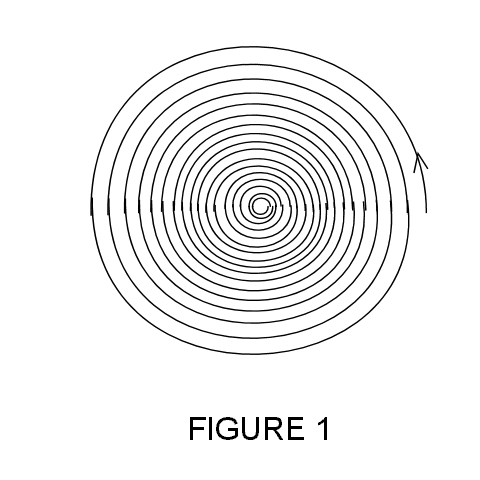 In 2D they are like circles within circles but in 3D or more they are like shells within shells connected as a total spiral (ideally this should then be envisaged in 4D to give perfect super-symmetry when we introduce the anti-spiral). This is the same as the vortex model given in other articles where much more detail is presented, such as the article,
In 2D they are like circles within circles but in 3D or more they are like shells within shells connected as a total spiral (ideally this should then be envisaged in 4D to give perfect super-symmetry when we introduce the anti-spiral). This is the same as the vortex model given in other articles where much more detail is presented, such as the article, 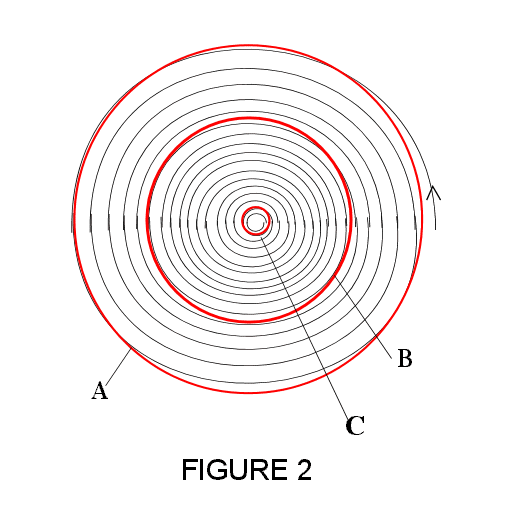

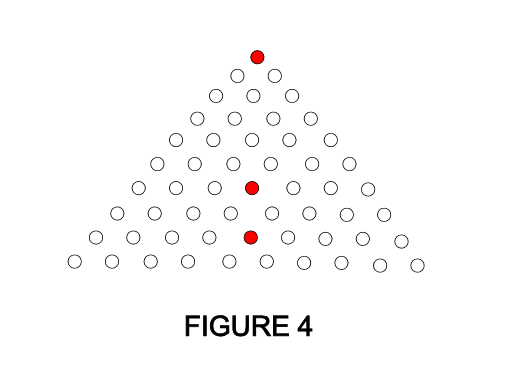 Figure 4 gives another view of this. The top represents the unity of everything below it, and corresponds to A. Then B and C are levels further down.
Figure 4 gives another view of this. The top represents the unity of everything below it, and corresponds to A. Then B and C are levels further down.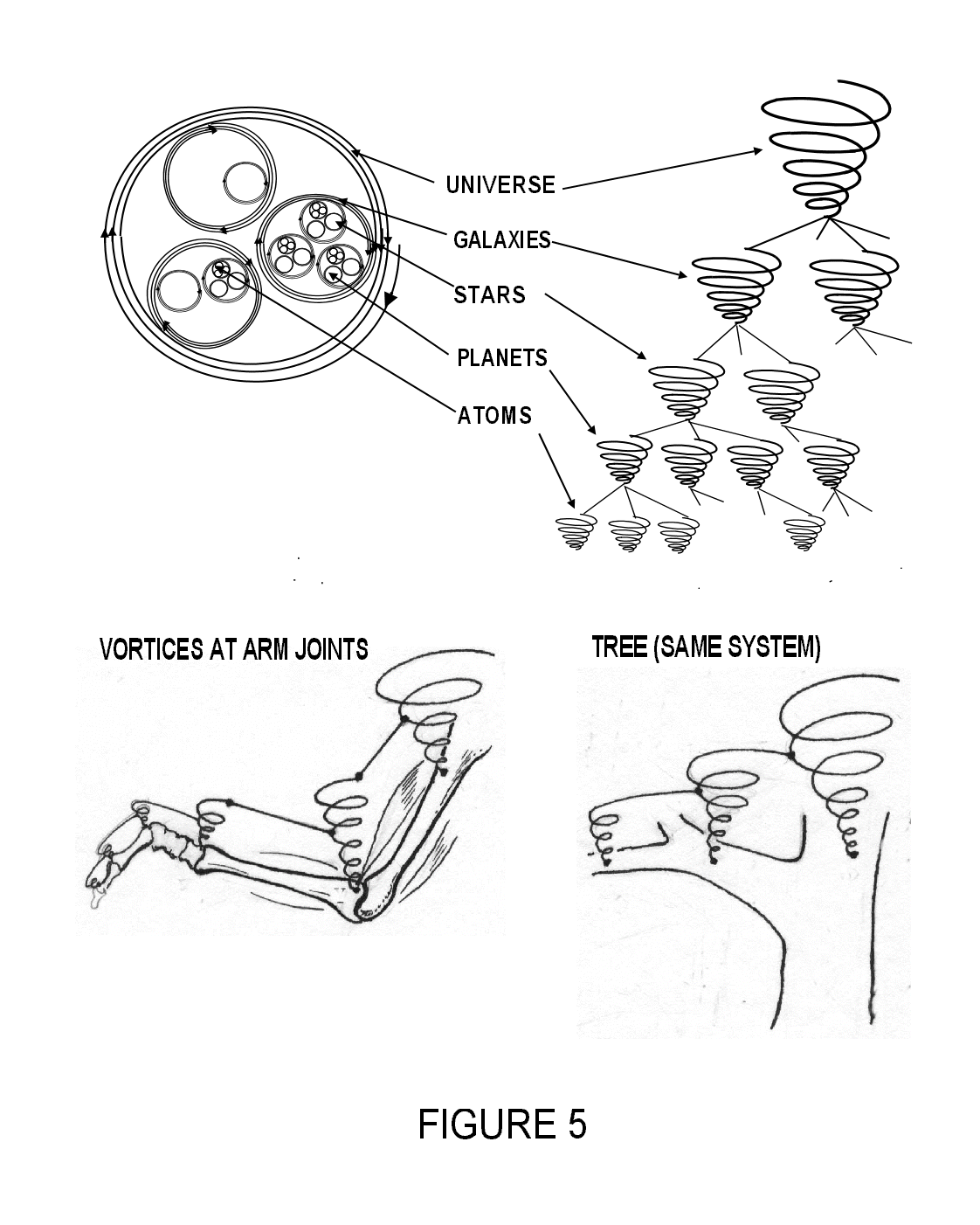
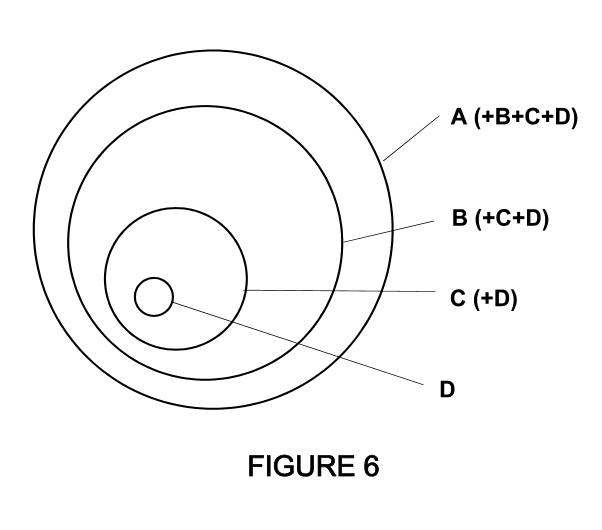 In Figure 6 we see that A is the 'president' component in the programme which spans all factors or lower fractal levels. We have in fact already created a fractal postulate by establishing the goal to be achieved.
In Figure 6 we see that A is the 'president' component in the programme which spans all factors or lower fractal levels. We have in fact already created a fractal postulate by establishing the goal to be achieved. 





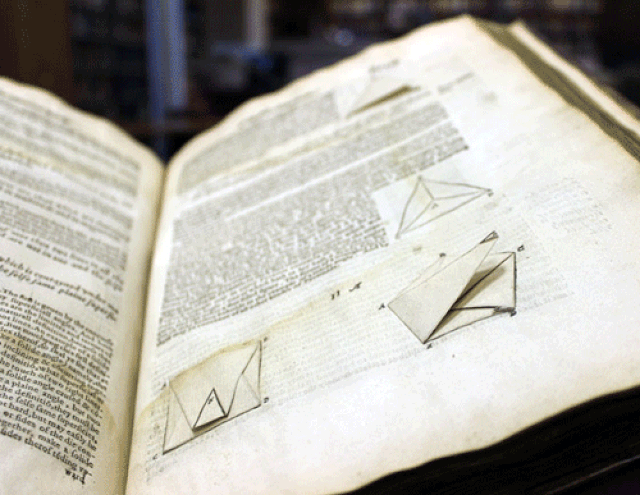
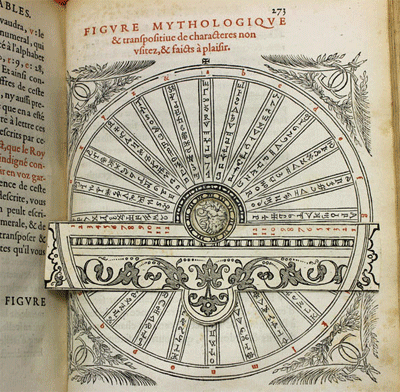


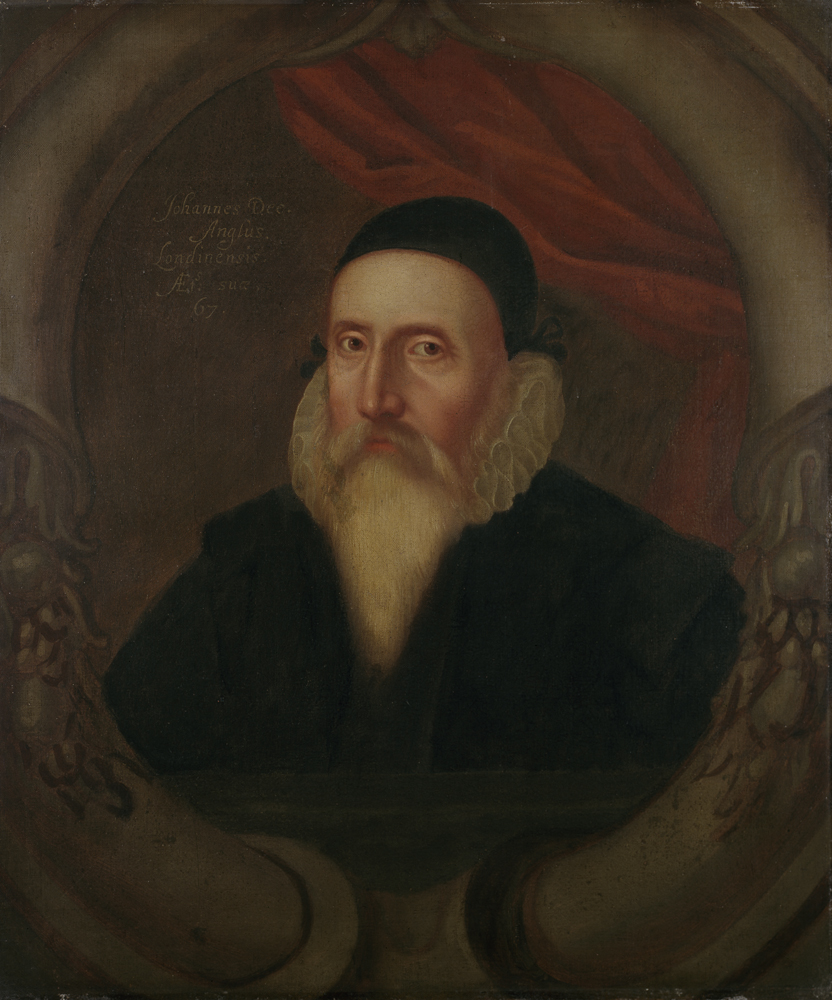


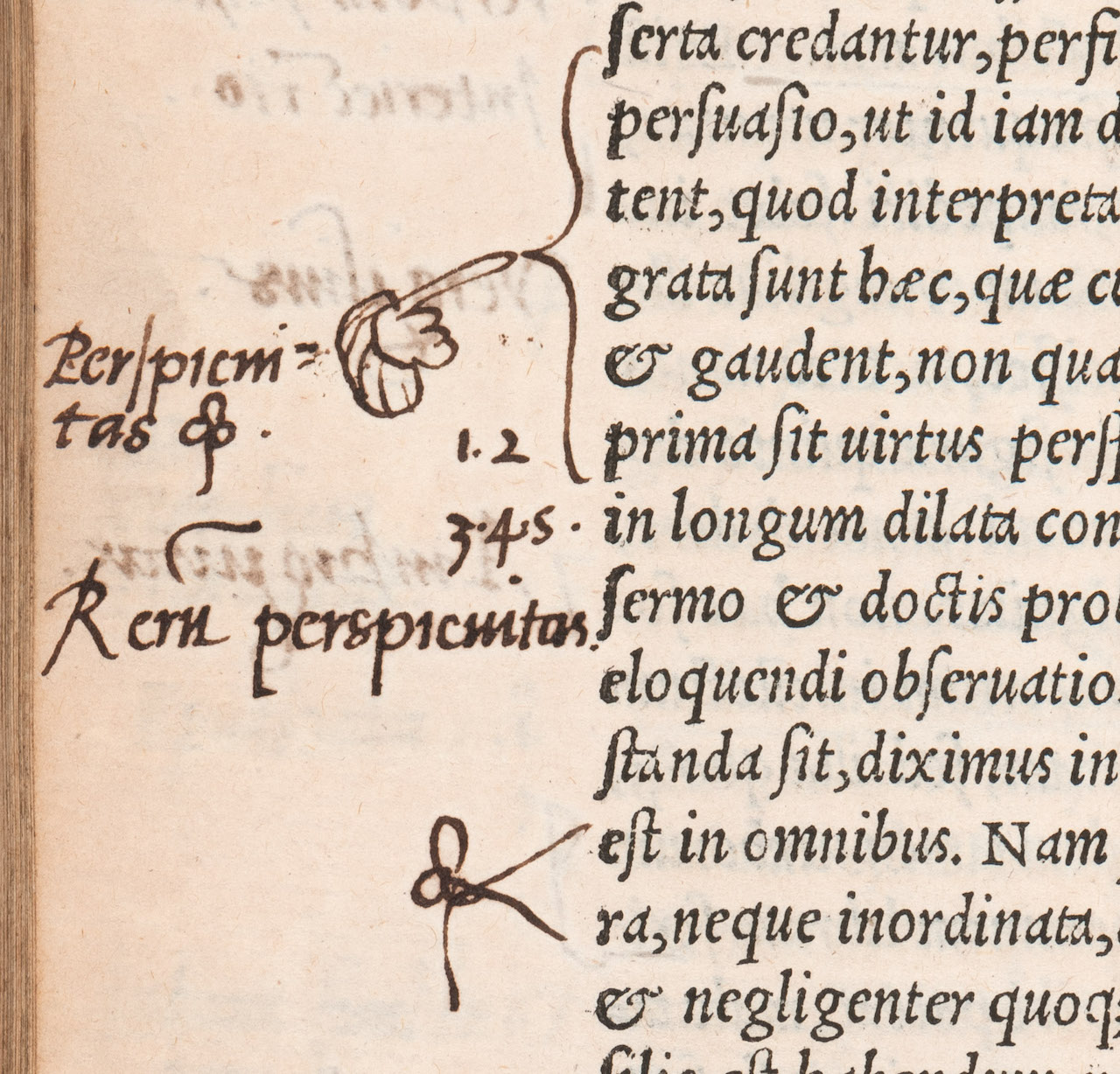





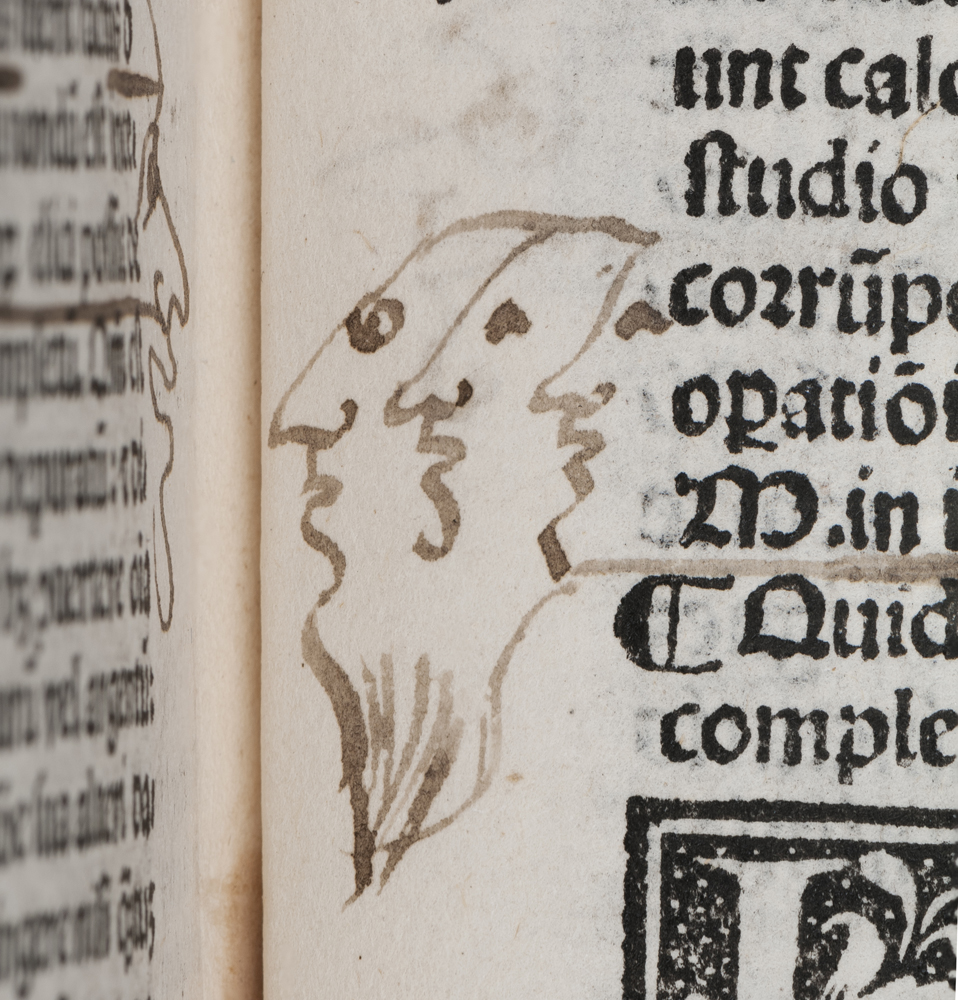













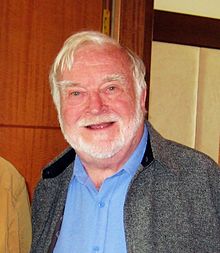
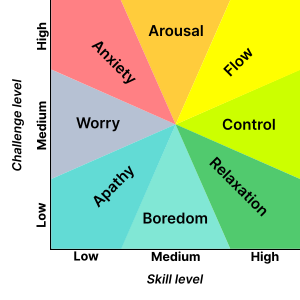












 of sub-varieties of the given algebraic set (the length of such a chain is the number of "
of sub-varieties of the given algebraic set (the length of such a chain is the number of " ").
"). of prime ideals related by inclusion. It is strongly related to the dimension of an algebraic variety, because of the natural correspondence between sub-varieties and prime ideals of the ring of the polynomials on the variety.
of prime ideals related by inclusion. It is strongly related to the dimension of an algebraic variety, because of the natural correspondence between sub-varieties and prime ideals of the ring of the polynomials on the variety.
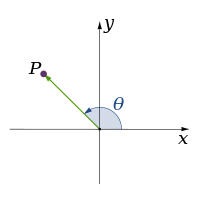

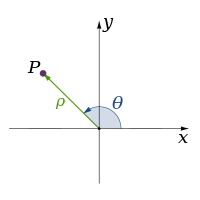

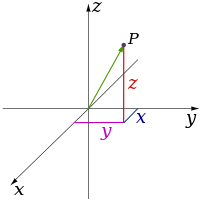
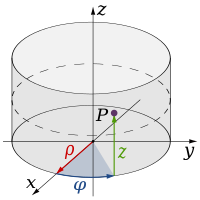

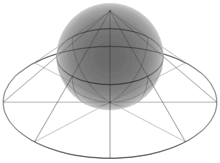




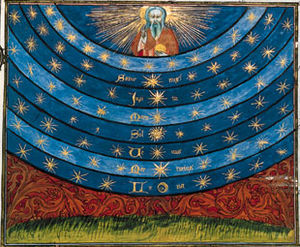
![[icon]](http://upload.wikimedia.org/wikipedia/commons/thumb/1/1c/Wiki_letter_w_cropped.svg/20px-Wiki_letter_w_cropped.svg.png)